#it makes it extremely more difficult for me to use the old image viewer
Text
I know we're all complaining about the new layout — I know, it's really stupid, it looks like Twitter — but I want to share with you this bug report I sent to Staff, as I believe it contextualises why the "changing features that aren't broken just because you can" ideal from Tumblr's higher ups ends up making the lives more difficult for a lot of its users; more specifically disabled folks.
Good afternoon,
When using Lightbox View I need to click on the image for the caption to disappear — this is absolutely necessary as I'm visually impaired, and have the letter size on max, and when viewing an image the Lightbox View caption occupies an excessive amount of my screen, so seeing an image is not easy — however this made me discover two things:
1. If you click on the area where the caption is, even when it's hidden, it will take you to whatever blog was in the caption. This is quite annoying as I'm actually trying to zoom in but keep being accidentally transported to someone else's blog. (AKA the caption seems only to become invisible, but it's still there, so when I click around the caption is supposed to be it'll act as if it's still there)
2. If you try to zoom in in that caption area not only can you not zoom in but it will also make the caption appear again, however you won't be able to make it disappear again by clicking on any area of the image. The caption will be there without you being able to make it disappear.
I will add obviously none of this was a problem in the old image viewer, I don't have any intrusive captions or accidentally going to other images and blogs that I don't want to go to. Please I beg you to give us an option to return to the old image viewer on the dashboard. You also made it more difficult to click on a post to only see that specific post, something I did a lot since it allowed me to use the old image viewer.
Previously I could click on the user's name and it would open it on their blogs. That would do the trick. Now you have to click on the surrounding blank space but because, again, of my accessibility features I need to have on to be able to use Tumblr, there are almost no blank spaces available for me to click on!
I assume you're aware this is not a problem of the accessibility features themselves, as I had no qualms about any of this previous to these new features being implemented, but a fault of your new features that are inaccessible and are causing more harm than good.
#Give it up for lighbox view biggest hater: me#we can also see that the new thing of sending people to OP's blog without showing the actual post we're clicking on#affects not only the prev tags problem#more than affecting the “Tumblr ecosystem”‚ which admittedly it does‚#it makes it extremely more difficult for me to use the old image viewer#which is the one that actually works best for me#tumblr#tumblr updates#lightbox view#prev tags#gle original#I don't care they keep saying they won't give the option to have the old image viewer back#I'm gonna keep complaining because it genuinely affects me#disability stuff#disability
20 notes
·
View notes
Note
[VICE VERSA episode 3 parts 1&2]
Talay with his anti-fantasy bias again, thankfully Puen answers him for me
Hey Nurse, don’t you have a /job/
WHAT DID PUEN DO TO MAKE TALAY WANNA KICK HIM
Maybe Puen was on to more than I thought when he brought up hurting him (WHILE LITERALLY IN BED)
“It’s extremely difficult to find a match” Bitch where, the only example you have are two girls who clicked on the same day
These two seem to have switched, now Talay’s the chill one while Puen is fussing over going back
“If it’s you, I’m okay” Puen: *d-doki*
“I don’t like pink” Talay shut the fuck up
Also just because the pants belong to Tess doesn’t mean you HAVE to wear them
“Open your mouth willingly or I make you” There he goes again with his dom streak
“The café doesn’t really wow me” That’s because you’re not in a CAT café my man
Talay please don’t ever apply for the job of forensic sketch artist
“Were you born with straight hair” Nope my hair is hella gay
DID YOU GUYS EVEN PAY FOR THE MEAL
Okay but Tess is just the kid of the guy who owns the film company right? How on earth did the script become his business? What the heck is his position
It went by fast but Up and Aou went to “pee” /together/, HMMMM
“You once had a 39 degree fever” Puen should’ve said “yeah but this is a /forty/ degree fever”
AOU SPITTING OUT HIS DRINK IS SO FUNNY SLDKJFSKLD
Right so this is where I really don’t Puen simply because I h a t e drunk drivers, it’s one of the most irresponsible things you can do and I wish they’d chosen something less severe to show that he’s not treating Tun’s life with respect
(Jimmy’s drunk acting is still pretty funny though)
I feel so fucking bad for Up and Aou man, they worked so hard on this and now their friend is acting like a clown and about to ruin the whole thing and they don’t understand why
DON’T OPEN YOUR MOUTH WHEN THERE’S FOOD IN IT PUEN, FUCK
It’s pretty thoughtful of Talay to ask him what’s wrong rather than to keep chastising him
Poor Tun is literally living the “what if you woke up famous” question
Up’s “HELLO!” I’m screaming
Call me an uncultured swine but isn’t social satire also a form of comedy
Maybe Tun shouldn’t have gotten physical but I don’t even give a shit, throw those asshats in the trash instead of the scripts
Like yes apparently the scripts sucked and yes they thought they were alone but would it kill you to be professional (and respectful, like they literally SPAT on the scripts) at your workplace, Jesus
Going by their flaws I’d probably hate Tun’s script the most lmao, I hate plotholes (well, big ones that truly kill a story)
I think I’d be with Up; toss a middle finger at 26P and try every other film studio
As much as I have my gripes with Puen being stupid I appreciate that he regrets it so sincerely
I NEED TO KNOW IF THOSE GOOFY EXPRESSIONS WERE ALL SEA, LIKE THE DIRECTOR SAID “okay go nuts with your face” AND HE DID
“The old Tun has died” You have no idea
Screw the person who has to clean these windows lmao
Love how Up’s sentence is five times the size of the other two XD
the way i ended up writing an entire in-depth analysis for this episode yesterday only to lose it forever because of my shitty internet connection :)))))))))
not even gonna try to replicate it but the point was!!!!!!! i feel like people either want to ignore the drunk puen narrative or use that to condemn him and i think both attitudes are kinda doing a disservice to the character. the show can’t really explore that side of him because it would clash with the tone of the story, but it does help the viewers form a pretty clear image of puen in their heads, of someone who is acting irresponsibly and should know better than drink and drive, and at the same time of someone who is very lonely and unsatisfied with his life despite being famous and rich. puen is a deeply flawed and human character, and throughout the show he makes tons of mistakes, because at his core he is a selfless man who desperately wants to be selfish for once, which is understandable to a certain extent, but not when he ends up hurting others (in this case, up and aou and, in a way, even tun)
in episode 6 puen says that talay “is the light that saved me” and that’s so true!!! but what i’ve always loved the most about them is that talay is just the lighthouse guiding puen in the right direction: talay is stern but caring, he points out how wrong puen was but never judges him for it, and when he realizes how bad puen feels for what he’s done, he tries to cheer puen up any way he can, but never steps in to fix the situation for him. talay is there to give puen advices and support, but puen is the one to actively make amends and change his behaviour. before being lovers, puen and talay are friends who make each other better, and that’s why i like them so much
ANYWAY!!!!!!
“Open your mouth willingly or I make you” There he goes again with his dom streak <<<<< CAN’T BELIEVE I FORGOT TO PUT THIS IN MY TOP 10 MOST UNHINGED PUEN MOMENTS IT DEFINITELY DESERVED A SPOT THERE SHAME ON ME
Okay but Tess is just the kid of the guy who owns the film company right? How on earth did the script become his business? What the heck is his position <<<<< i think it’s because tess’ father always wanted him to work for the company, and in episode 1 we see tess’ brother bringing talay along to help out with all the people wanting to sell their movie project. that’s how he meets tun again, and in episode 2 when talay goes to bar and meets up and aou as well, he says “your screenplay is bought. i talked to my brother for you”, so i think talay acting as an intermediary also made the project his responsibility in the company (it’s like he’s their agent, sort of?)
I NEED TO KNOW IF THOSE GOOFY EXPRESSIONS WERE ALL SEA, LIKE THE DIRECTOR SAID “okay go nuts with your face” AND HE DID <<<<< IM PRETTY SURE THAT WAS JUST SEA BEING HIMSELF because apparently stealing phones and making funny faces is his hobby
also i don’t talk nearly enough about my love for up and aou but GOD I LOVE THEM SO MUCH
#at this point the universe is basically screaming at me to shut the fuck up about vice versa and i simply choose to ignore it <3#vera and monica watch vice versa#m: ask
4 notes
·
View notes
Text
Is it ever okay to film strangers in public?
panopticontent

The experience of realizing you are being surreptitiously filmed by a stranger is now a relatively common one, but this is how it happened for Mitchell Clark: The 25-year-old was working a shift at his Atlanta Target when someone propped up a phone nearby.
“I thought it was for some dumb prank channel,” he says.
It wasn’t until a young woman bent over directly in front of him, her dress short enough to expose her entire bare bottom, that he realized what was going on.
The resulting video captures his shock — his eyes widen and his hands grasp his chest, agog — and later ended up on the OnlyFans model’s Instagram account.
“It made me look like a creep,” he tells me.
The video was an extreme example of a trend where women secretly film men’s reactions to them, often in the gym or in public spaces, either to shame the men for being inappropriate or to highlight the power of their own beauty — in Clark’s case, arguably both.
But this time it caused an uproar:
After Clark made a video about how uncomfortable he felt, other accounts reposted and responded to it, highlighting the ways in which public filming culture had gotten out of control.
(Vox was unable to reach the model for comment.)
It’s been a decade and a half since social media made it possible for anyone’s camera phone video to go viral.
But it’s TikTok, a platform where overnight fame is more achievable than ever, that has turned filming strangers in public into a controversial cottage industry.
While influencers on Vine, YouTube, and Instagram have long used passersby as unwilling background actors to gain clout, TikTok has also allowed those people to offer their sides of the story and actually get heard.
This is, in part, because of editing tools like stitching or dueting, and also because you don’t necessarily need to have a large account in order to go viral on the app.
Viewers are invested in watching all sides of the drama unfold.
Thanks to these responses and a handful of watchdog accounts, a major backlash against public filming has been brewing: Outlets from the Guardian to The Verge to Vice have issued pleas to quit filming strangers, while BuzzFeed christened the unsettling genre with an equally unsettling name: “panopticontent.”
Ask pretty much anyone in the world if they’d like to have someone film them without their permission and post it on the internet, and it’s difficult to imagine a normal person saying yes.
And yet, these videos continue to rack up millions of views, forcing us to reckon with the fact that in 2024, some of the most-viewed content on social media is essentially nonconsensual voyeurism.
There’s clearly an appetite to watch as strangers are shamed, ridiculed, gawked, or generally caught off-guard, even when we know it isn’t exactly morally sound.
A precursor to the form came in 2009: The blog People of Walmart was devoted to making fun of customers wearing embarrassing clothing (unsurprisingly, much of the humor relied on classist, fatphobic, and transphobic stereotypes).
Instagram wrought the rise of many more of these types of accounts, like Subway Creatures, with nearly 3 million followers, which collects images of bizarre-seeming people and circumstances on the New York City subway; Passenger Shaming, for videos of plane freakouts and other bad airport behavior; or Influencers in the Wild, which has more than 5 million followers and invites people to laugh at those who dare film themselves in public. Its website encourages viewers to submit videos by promising “Your clip could be seen by millions!”
The irony that it’s objectively worse to sneakily take a photo of someone else taking a photo of themselves comes secondary to the main goal: driving engagement by laughing at people who don’t know they’re being filmed.
Even supposedly wholesome content has fallen into the same trap.
In 2018, an influencer posted an Instagram Story saga about a potential romance budding between two people on a plane seated in front of her, then later had to apologize when the woman felt that her privacy had been violated.
The “Plane Bae” story went massively viral before anyone questioned whether what they were watching was exactly ethical.
It would be easier if we all collectively decided that it was never acceptable to film random strangers in public, under any circumstances.
But rarely are social questions, especially ones that collide squarely with the ever-evolving norms of our online lives, this uncomplicated.
You do, in fact, have the right to film in public places; as the ACLU points out, the ability to do so “creates an independent record of what took place in a particular incident, one that is free from accusations of bias, lying, or faulty memory.”
This is especially important when filming the police or recording an encounter that could become violent:
The video of George Floyd being murdered, for instance, was crucial in sparking the wave of protests against police brutality in the summer of 2020.
Camera phone videos depicting racism and harassment, particularly during and after the lockdown period, have also opened important conversations about acceptable behavior in a uniquely distressing time.
Do arguments about First Amendment rights and social justice really apply to people who make strangers uncomfortable for engagement on TikTok?
That depends on who you ask.
Most will say they’re simply trying to “spread love” or that they never expected the content to go viral, while refusing to ask themselves tougher questions.
It’s not difficult to imagine, for instance, someone being concerned about their digital privacy for more serious reasons, such as avoiding a stalker.
One woman who was filmed being approached for a high-five by a dancer in Times Square and then began crying was both mocked for her reaction and accused of being racist because the dancer was Black.
Her sister then made a video explaining that she was autistic and has contamination OCD, and therefore doesn’t like being touched.
Another woman was falsely maligned for riding the subway with monkeypox after someone made a TikTok of her, but the reason for the bumps on her skin was actually due to a genetic condition.
There’s little legal recourse for people who find themselves unknowingly caught on camera.

As Derigan Silver, chair of the University of Denver’s media, film, and journalism department, explains, a successful defamation case requires proving that the material contains a “false statement of fact” — but a video tends to show events as they happened, even if divorced from crucial context.
Clark is hoping to get the help of a lawyer to get the original video taken down, but he’s aware that that’s likely as far as it will go.
“It sucks that we’re so far behind with our legal system that not more can be done about this right now. But it’s real, and it’s getting worse,” he says of the scourge of content creators who use strangers as background props.
The idea that privacy laws should evolve to incorporate situations like Clark’s, however, could be a dangerous one.
“We want the ability to record things in public and to document them because it supports very important First Amendment ideals,” says Silver. “The flip side of that is not everybody is doing this with good motives.”
Silver notes that where the law could catch up is by differentiating between newsworthy and non-newsworthy events — say, an encounter with police versus recording an anonymous Target employee — and making it harder to prosecute people who film matters of public consequence.

In a paper on what she coined “forced faming,” British intellectual property law scholar Hayleigh Bosher also points out how the legal system must contend with the rise in deepfake content, which creates real-seeming content out of unwilling people’s likenesses.
No law can solve the problem of people being assholes on social media, but there are other ways to influence people’s behavior online.
“There’s the law, there’s technology, there are cultural norms, and there’s the market,” explains Silver. “We can exert pressure on platforms and say, ‘Stop monetizing these accounts.’ Or they could write technology that makes it more difficult to upload material that violates someone’s privacy. Or we could have people online saying, ‘I’m going to stop watching this stuff.’”
Right now, it’s the cultural norms that are shifting most quickly: This moment has given rise to a number of accounts that call out public filming, like Joey Swoll, with his 7.7 million TikTok followers (his was one of the accounts that drew attention to Clark’s case).

YouTubers like Kurtis Conner, meanwhile, have made videos calling for the end of filming strangers.
But there’s hypocrisy at play here too.
Swoll’s account ostensibly exists to maintain a certain ideal of gym culture, but the majority of his content is dedicated to shaming (usually) women’s behavior — even influencers who are innocuously filming themselves without involving anyone else.
Some of the instances he calls out are indeed objectively horrible, like the woman who pretended to take a video of herself in order to mock the man exercising behind her, but others are more cringeworthy than anything else, like the girl who did a TikTok dance in front of someone using a bench press.
Swoll also seems to have a special interest in objecting to women who claim that certain men at gyms make them feel uncomfortable, and then film the alleged “creep.”
These examples aren’t always black-and-white: The evidence of the alleged harassment or creepy behavior isn’t always clear from the videos, but never does Swoll allow for any interrogation or curiosity about what might have occurred off-camera.
Instead, he’s positioned himself as the head vigilante of the digital Wild West, shaming surreptitious gym recorders by bringing greater attention to them — ironically, the very same thing the women appear to be doing with the “creeps” they film.
The fact that both Swoll and Influencers in the Wild tend to have millions more followers than the people they’re criticizing also adds another layer: When is calling out those who film strangers creating a barrage of attention on bystanders who never wished to be dragged into the public eye in the first place? (Swoll did not respond to a request for comment.)
The thirst for voyeurism content — whether you’re watching a stranger unknowingly get filmed or watching someone scold a stranger for doing the filming — means that accounts who engage in it have a higher likelihood of going viral and scoring lucrative brand deals. Influencers in the Wild, for instance, has its own merch and board game, while Joey Swoll regularly promotes his brand of low-calorie sauces.

Knowing that the demand for “panopticontent” is so high leads creators to produce more of it — often by using TikTok’s stitch or duet feature, which allows them to milk as much clout as they can from a single trending topic or video — whether or not they realize it’s ethically murky.
Faced with questions like, “Is it worth it to pull my phone out right now?” or “Am I a shitty person if I film someone without their knowledge?”
Silver recommends resorting to the golden rule.
We’re already being recorded all the time — by security cameras, by our phones, which track not only our location but every keystroke we make online, and by other people’s cameras — but we’re the ones who decide whether or not to post our own videos online.
Platforms like TikTok, YouTube, and Instagram could theoretically step in to demonetize accounts that make money from non-consensual voyeurism, but this is almost an unimaginable scenario, in part because it feels impossible to enforce.
Until then, it’s up to audiences to shift cultural norms around what’s acceptable behavior online and what isn’t, but given the astonishing popularity of these videos, that doesn’t seem all that likely.
After the incident at Target, Clark’s first thought was that he wanted to make sure it wouldn’t happen to anyone else.
“Working in retail, you get used to people harassing you. I’m not seen as a person anymore, I’m seen as an object,” he tells me.

Increasingly, this is how people on social media view each other: as NPCs, disposable, as background actors with no desires or interests of their own.
While TikTok has allowed Clark to respond publicly and have thousands of people rallying behind him, it’s also responsible for helping to create the problem in the first place.
“There’s a lack of decency, and I think it may be the allure of getting famous and going viral. People think that justifies the means, but it definitely does not.”
0 notes
Text
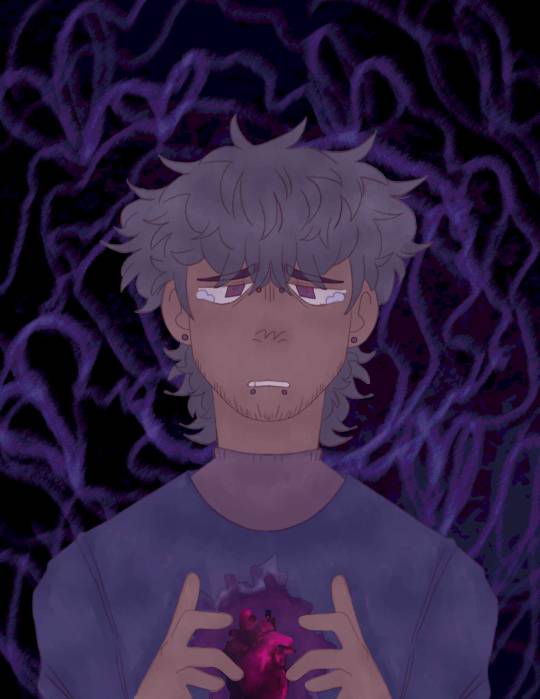
First panel, Digital piece
This first panel was tricky, as it was trying to figure out all the colours I wanted to start with as I knew I wanted to phase from cool colours to warm, but figuring out how to go about that was difficult.
This panel really did a great job in channelling the emotion that this character is feeling. It works well in starting off these series of illustrations as it really sets the mood.
I wanted the viewer to really understand how upset he was, the mix of blue and black in the background showing how drowned he is in his own thoughts. The colours all mix together so well and the pinks used for the heart really make it stand out, clear that it's the centerpiece.
The shading in this piece was created by using a clipping layer, I used a dark purple and shaded gradually using lighter shades of the colour, once happy with it, I lower the opacity which made the purple look like darker shades of the colour under it.
I'm really happy with how this turned out, it was a great starting point and I really don't think there is anything I’d change about it.
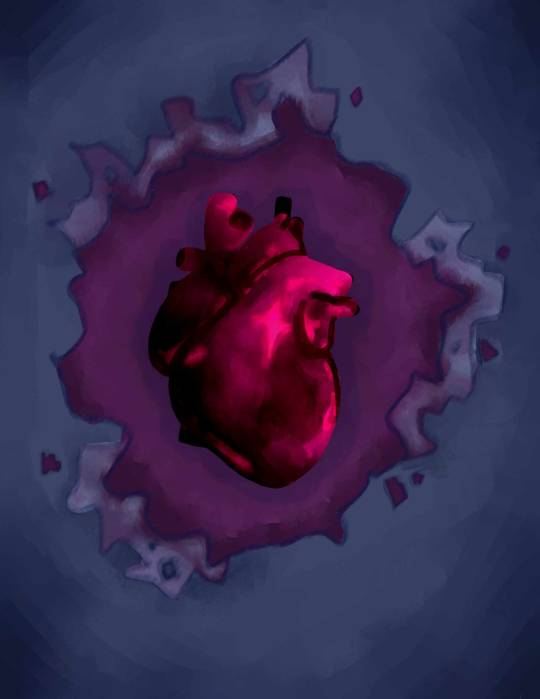
Second panel, Digital piece
This was used as both the second panel and the first. I really wanted to make this look bold and eye catching.
The shading was done the same way as the first, but I focused on having it look like it was surrounded by darkness to really show that it was damaged, broken.
Shading the actual heart was hard, I needed to make it look dark but stick with that pink look. I struggled balancing the colours in a way that made the piece look good, but in the end I think i finally landed on something I was proud of.
I really like this panel as a I feel like it shows that this person is extremely vulnerable, like at any moment they colour crack.
I think this illustration is perfect for the second shot as it adds a deeper layer of understanding to the characters emotions.
I have nothing that I would change about this illustration.

Third panel, Digital piece
This is my favourite illustration with in the project, it really works well with the whole thing, it shows that these thoughts and feelings are really all the own of the character as symbolised by the cloud of scribbles surrounding the characters mind.
The colour finally starts to shift in this image to a lighter one as we see the figure receive a message, this colour change shows a hopefulness that its some kind of message from the person they're with.
This panel also gives us a small further look into this characters mental state as we see old clothes on the floor, showing a disregard for hygiene, hinting to mild depression.
We also see a change of facial expression from the figure showing a hopeful glance up, eyes still watery yet appearing calmer.
This sample really could sum up the whole story in one shot and i'm happy with how well i managed to get that to work.
I wouldn't change a thing about this illustration as I feel it ties in perfectly with the them.
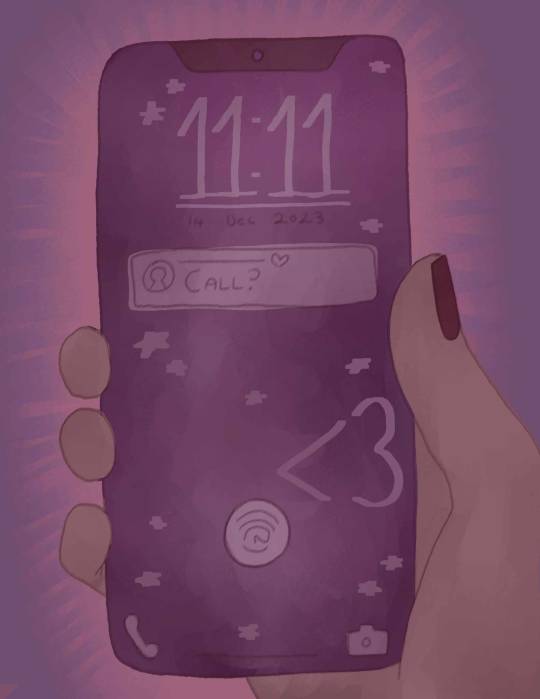
Forth panel, Digital piece
Although I wish I’d gone with a better pose for this piece in which we could see the character looking at the message, i still really like what this illustration shows.
It gives a look into what the figure is seeing just because of a very simple message that made their worries about being hated or unloved, vanish.
It shows how much this has cheered him up compared to before.
This illustration also really gave me a nice way to transition into the warmer colours without suddenly changing the background.
I'm pleased with this panel as it does fit in really well with the rest of the illustrations, yet if I were to recreate it, I would like to try a more interesting composition.

Fifth panel, Digital piece
The last illustration, this is where we see the character relaxed, content. It shows us how small his worries were and yet how it massively affected his feelings.
In order to show that this character is slowly breaking out of these habits of being consumed by his feelings, I drew in flowers, and their stems wrapping around his heart as if they were giving a comforting hug to the figure, reassuring him and helping him calm down after everything he was feeling.
The colour in the background is now a warm pinkish orange, further presenting how much that message has comforted the figure.
I feel this last panel is a nice way to end the illustrations finishing off a short simple story in a satisfying way.
If I were to change one thing though I would want to change the pose in which we can see him on the phone with the person, further reassuring him that he's loved and appreciated.
0 notes
Text
Youku neerja movie 2016

#Youku neerja movie 2016 movie#
Ram Madhvani describes every part, every scene of the film very wonderfully. How she bravely handled the situation is what the film has been made on.ĭirector is the real hero of this movie. The flight was hijacked by a terrorist organization in Karachi. Life has to be bigger not longer! The film, Neerja is a portrayal on the life of the courageous Neerja Bhanot, who sacrificed her life while protecting the lives of 359 passengers in 1986. The remaining actors are only round the shoulders but not outstanding and impressive enough because they do not have much acting space. Her beauty and expression really make viewers believe that the people in the film are really brave flight attendants honoredby both the United States and India. So I gave this part 6.5 out of 10, guys.Īcting: Sonam Kapoor had a successful transformation into a successful female hostess Neerja. The film has no special effects or special effects and the soundtrack has not left an impression on the viewers.
#Youku neerja movie 2016 movie#
Image - sound: This part of the movie is not very good, partly because the space on the plane is relatively cramped, the rest is due to the angle is not really reasonable, making the audience very difficult Keep track of what happens on the plane, especially in the last scene. Add a rating to this section 7/10 of you. Neerja (2016) is truly a valuable tribute to her family, friends as well as passengers on the flight number 73 and helps the audience around the world clearly feel the cruelty of the terrorist organizations. Through Neerja 's story, the film wants to praise the Indian woman for her high qualities such as bravery, intelligence, calm and devotion to her work. The cruelty and character of the four terrorists has not been clearly shown yet, so it is not enough to make the audience really scared them. Actually, if you remove these scenes, the movie circuit is fine and the viewer still understands what the movie wants to convey. In addition, Neerja (2016) still has the inherent weakness of Indian cinema that is singing and dancing too much. In addition, the film also incorporates more scenes to describe the private life and thoughts of Neerja so also reduces the suspense of the hijacking. However, the film circuit from this time was deployed quite steadily, slowly and until the rescue scene, it made the audience really wake up. You have to be really patient to watch the first 30 minutes before you can feel the movie is quite attractive. However, based on real events, the film is quite attached to what happened, so the drama and tension of the film are relatively low. The surprise reviewer Neerja is so beautiful, guys, maybe even more beautiful than actress Sonam Kapoor. The young girl of less than 23 years old was extremely beautiful, not only in appearance but also in her heart and courage. The interesting point of the movie is to make viewers linger to watch the credits because in this part we admire the real life beauty of the hostess Neerja. Neerja (2016) brings viewers a lot of emotions, especially in the final scenes of the film. Indeed, those moments on the flight were too horrible for the passengers as well as the crew and without the bravery of the flight attendants like Neerja, the number of deaths would not stop at 20. Many reviewers believe that after watching the movie, many of you will also search Google for more information about the above hijacking event. On that flight, although it was the first time he took the role of the flight attendant, but with his efforts, quick wit and courage, flight attendant Neerja Bhanot saved 359 of the 379 passengers and Crew members. Plot: On September 5, 1986, the plane of Pan Am airline (the airline in the film Catch me If you can) with the number 73 flew from India to the US, was hijacked when stopped. Well, don't let you wait any longer, let's get together to review Neerja movie (2016) - Brave air hostess. Although the content is different, but somehow the movie made me lead to one of the most popular Chinese works in 2019 called Captain - Captain. This is an Indian film made in 2016, based on a true event that took place exactly 30 years ago.

0 notes
Text
Please allow me to tell you about one of my favourite cartoons through this informal essay I did for school a couple of months back.

Gravity Falls and How it Did The Unimaginable
**SPOILERS... KINDA**
The 2010s saw the creation of some of the most iconic animated tv shows ever made, the likes of Adventure Time (2010), Steven Universe (2013), Over the Garden Wall (2014) and The Legend of Korra (2012). To explain why this era’s shows are so admirable is honestly rather difficult. Yet, there are many factors that can be taken into consideration when looking for an answer.
The past decade was very successful in perfecting their craft and utilizing the animated format to their favour, creating some of the wackiest and fascinating cartoons ever made. With the advancements made in both 2D and 3D animation for film, this bled into the world of TV as well.
To mention that 2010s cartoons have stunning visuals would be an understatement. Everything about the animation was beautiful; the strong colour palettes, the clean and imaginative character designs, the colourful and immersive backgrounds and especially the mesmerizing worlds that can be found within episodes that are half an hour.
This era’s cartoons also led to a massive shift in storytelling, writing longer-running stories that spread out across seasons while also swapping out episodic adventures for serialization. This heavily aided in the popularization of these shows, due to the rise of internet fandoms and dropping the taboo that cartoons were only for kids. Many shows acknowledged their older viewers by leaving clues and even puzzles to be solved by the theorists who have a large appearance on social media platforms like Reddit, Twitter and Tumblr. As the shows progressed, their fandoms created many theories for what they believed might happen within their favourite series. The top three shows from this era all utilized these changes, being at the forefront of the shift and helping guide the creative vision of 2010s cartoons.
Often regarded as many people’s favourite cartoon, Gravity Falls presented one of the best mysteries of the decade with two seasons and only 40 episodes. Inspired by Twin Peaks and The X-Files, it’s considered as the kids’ version of these two iconic shows as this cartoon acts as many people’s first introduction to horror through bright colours and fun characters.
This series follows the adventures of Dipper and Mabel Pines, twins, who are sent to spend their summer with their great-uncle or Grunkle Stan in Gravity Falls, Oregon. This town is full of oddities like supernatural creatures, insane and eccentric inhabitants, and many puzzles. The Pines twins must adjust to the weirdness while uncovering the mysteries and protecting their new town.
While living in Gravity Falls, the twins are forced to work in the Mystery Shack, a tourist trap created by their Grunkle Stan that overcharges unlucky tourists, teaching about fake monsters despite there being real creatures all over town. On his first day in Oregon, Dipper accidentally came across a mysterious journal written by an unknown author that explains all the oddities to be found in this strange town. This book acts like an encyclopedic of the Weird for Dipper, an inquisitive 12-year-old kid who seeks answers.
Dipper is an extremely intelligent kid, his brain being far more developed than his body. He’s rather awkward and self-conscious as he often stumbles over his words or gets embarrassed trying to talk to girls. Despite this, the boy is an adventurer at heart who just wants to grow up and skip his upcoming teenage years.
While Mabel is quite the opposite in many ways, she is loud and has an in-your-face personality. Mabel is bouncy and fun, she is so excited to start high school. She is easily excitable and for the larger part of the series, she is in her boy-crazy phase. Mabel is a girly-girl as she likes all things; glitter, unicorns, rainbows, partying and crafting. Yet, she doesn’t often compare well with many of the other girls in town, they see her as weird and “too much”.
(In all fairness through, it is not too kind to either of the characters as their personalities are more complex than just awkward nerd and artsy girl-girly.)
Dipper and Mabel’s personalities are very different but somehow, they—along with their Gravity Falls family—manage to solve mysteries and save the town, multiple times.
Gravity Falls is an honestly genius series that completely changed the way cartoons were made. Originally when writing a series, you’d create a base of your story; characters, the universe and a basic plot. Yet, when creator, Alex Hirsch (who was in his early/mid-20)s and his small team first began constructing their show, they planned out everything they could possibly think of for the first season. Additionally, outlining some answers for their biggest mysteries that would be answered at the end of the series.
Despite being rated TV-Y7, this series really pushed the boundaries of kids’ television. From the teeth being ripped out of a deer’s mouth by a demon, rearranging the functions of every hole on a man’s face to an aggressive pop-rock sock puppet show that ended in a dramatic slow-motion scene of the puppets burning. Gravity Falls wasn’t afraid to get a little weird or creepy. Or create some genuine nightmare fuel.
From the beginning, Gravity Falls had built a mystery into its series, hiding secrets and clues all throughout the show. Most notably were the backwards-recorded message and cryptograms, using roughly nine different kinds, even creating two of their own.
The inclusion of cyphers and mysteries for fans to solve is possibly the reason why this series was so successful. As one of the first shows to do something like this, Gravity Falls used social media and internet fandoms to its advantage.
As mentioned earlier, cartoon fans have quite a presence on social media platforms like Twitter and Tumblr. They create theories and share fun ideas about their favourite shows. Viewers of Adventure Time, Gravity Falls and Steven Universe were all included in their share of theory fun.
Sometimes, fan theories end up being correct but when you’re Gravity Falls creator, Alex Hirsch, you don’t just watch from the sidelines as your viewers figure out the biggest mystery of your show. No, you create a hoax to get your viewers off your trail and that is what he did. Around 2013, only halfway through the first season of the show, viewers had started to follow the clues, theorizing who was the author is Dipper’s mysterious journal.
Unfortunately for the Gravity Falls production crew, the viewers were right— for the sake of readers who have never seen the show, I will not mention who the author was as it would be the biggest spoiler.
In 2013, a supposed leaked image of a tv showing a younger version of the show’s crazy old man character, Old Man McGucket, writing in the infamous journal was uploaded anonymously (by Alex Hirsch) to 4Chan.
Despite the image only being on up for a few hours, it spread like wildfire. Much to the team’s success, theorists stopped searching for the answer to “who is the author” and just accepted the image of McGucket as the truth.
To further push the fake-out, three words were posted to Alex’s Twitter, “fuming right now.”
The tweet was deleted a few minutes later and fans genuinely believed that someone from the Gravity Falls team had leaked the most important part of the story.
While doing research, I came across a Reddit post from April 10th, 2013, the day after ‘leak,’ Alex’s tweet was uploaded. In this post, user, TheoDW uploaded an image of Alex’s tweet with the caption, “It seems that Hirsch got mad at last night’s leak. He already deleted this tweet.”
Seeing the reactions of these Redditors in 2013 is kind of weird and crazy to look at. “He has every right to be upset. Someone internally released a plot revealing screen shot of series breaking spoiler information,” a deleted Reddit account commented.
“This is Alex Hirsch’s biggest success by far, he spent a huge amount of time carefully planning out the series, and then in a moment someone releases a major spoiler. It would make anyone upset,” the user, Time_Loop commented.
“Seriously, this is a nightmare for a storyteller, and shows a breach of trust. I feel so bad for him–honestly, I hope whoever did the leak gets caught and appropriate action is taken. You don’t f–k with someone’s story like this. It’s unprofessional.” the user, lonelybeloved angrily commented.
In 2014, this ‘leak’ was finally disproven when viewers were given an episode on McGucket’s backstory and an amazing tweet from Alex Hirsch.
Alex had post an image of himself playfully pointing at a monitor with the supposed leaked picture with the caption, “1) Make hoax 2) Upload to 4Chan 3) Post angry tweet about "leak" 4) Delete tweet 5) Let internet do rest”
It is so interesting to look at these comments know that all of this was orchestrated by Alex.
I wish I had been old enough at the time to follow theories and fandom stuff like I do now with current cartoons but really looking at this from an outside perspective, this was insane!
The real author wasn’t revealed until 2015 and when viewers first got the answer to this biggest show on their screens, they must have freaked out!
Following the finale in 2016, a single frame of a stone version of Bill Cipher, the show’s villain, flashed in after the credits had finished.
Alex Hirsch and his team actually created a real-life statue of their villain for their viewers to find and on July 20th, 2016, the Cipher Hunt began.
By following clues, the Hunters found themselves all over the world; Russia, Japan and then travelling throughout the United States for the final 12 clues. When the hunt took them to Los Angeles, actor, Jason Ritter (voice of Dipper Pines, also a massive fan of the series) and Alex Hirsch’s twin sister, Ariel Hirsch (the inspiration for Mabel) joined in the fun helping the search.
Finally, the hunt ended on August 2nd when someone tweeted out an image of the found statue in Oregon, the same state in which the fictional town of Gravity Falls exists. The Cipher Hunt had ended but finding the statue wasn’t Alex’s goal for the scavenger hunt, it was about the journey and bringing together the viewers, more than having them actually find the statue.
Creating its own hoax, an international scavenger hunt and quite a bit of nightmare fuel, Gravity Falls was a show truly unlike any other.
The 2010s saw some of the strongest cartoons ever made, Adventure Time, Gravity Falls and Steven Universe acting as the leaders for multiple different changes in the medium; storytelling, worldbuilding, interaction with viewers, utilizing social media, representation and further pushing music into the cartoon world. From what was created this past decade and what has already been released in 2020, I’m so excited to see what comes next.

I have another one of these which is on Steven Universe’s representation and music if you would like to see that too!!
#isaac rambles#long post#gravity falls#cartoons#cartoon review#dipper pines#alex hirsch#OH MY GOD I LOVE ALEX HIRSCH'S BRAIN!!!#disney#disney channel#disney cartoons
72 notes
·
View notes
Text
HIT
Maribat by @ozmav
Warnings: aggression and language
Almost 3K.
All Marinette could see was red, purple and yellow against pale skin.
It was mostly red, the edges already becoming purple and around a sick yellow.
She could blink, look away, try to think of something else, but the image was glued to her eyes.
The anger burning under the skin, the blood running hot in her veins, heart beating angrily against her ribs. She could feel the metallic taste of the cut that her teeth opened on her lip.
Marinette had never felt more hatred for anyone than she did at that moment.
She wanted to jump the jugular and pull out the trachea with her teeth.
The urge to kill.
"... you better get away from her." Damian growled. His face contorted with disgust.
“Who do you think you are to intrude on a family affair?!” Audrey Bourgeois stood, arrogant and pompous, glancing disdainfully at the Pack.
Chloe by her side, her eyes puffy, hair down shadowing her face and lips trembling from holding back the crying. The handprint on the pale cheek was obvious and clearly visible despite the hair to cover.
She didn't dare look at her friends. At the pack. The humiliation was a heavy feeling, seeming worse every moment she heard the shutter sound of a phone camera toward her.
Dupont would have something to talk about for weeks now.
"... who does he think he is?!" Kagami says. She was the only one who seemed coolly calm. "Who YOU think you are." There were more than sharp words coming out. There were canines becoming sharper by the moment and a lack of control going on.
Audrey seems offended by the girl’s words.
"Lower your tone, young lady." She replies. Her tone was threatening. “Do you know who you are talking to? I'm Audrey Bourgeois, one of the greatest designers of the world. Wife of the mayor of Paris. And I can end your family's life in two seconds.”
Adrien smiles mockingly at the woman's words. "I'd love to see that happen... Auntie."
The woman chokes offended at the nickname, but doesn't seem surprised by the boy's behavior.
She raises her eyebrow.
"When Gabriel told me that you were in your rebel phase and that you were taking Chloe the wrong way, I really didn't believe it." She says. "But I see this time he has some reason to warn me."
The Pack grunts at the man's name.
"I knew that piece of trash wouldn't be quiet." Max mutters venomously.
"It's time we put an end to this old man." Kim mumbles back.
Audrey seemed to tire of all the little show they were giving Dupont's students and grabbed Chloe's arm, trying to pull the girl into the limo parked on the sidewalk.
“Come on Chloe, you have to pack your bags. We leave for New York today.” She turns, ignoring the Pack.
Something pops in Marinette, because all she can do is slap Audrey's hand away from Chloe and put herself between them. She probably looked like a wild animal right now.
The stylist shrugs her arm, holding her injured hand. Red face in indignation.
"Don't touch her." Marinette says. "Or I'll be forced to do something you won't like."
“Oh? What are you going to do? Tell your parents? You're nobody, little girl.” Audrey laughs sarcastically. “Chloe, let's go. Now."
"Nette, please, I don't want you to get in trouble." Chloe whispers, the pain was clear in the words.
The sound that comes from Marinette's chest is animalistic. The sound made the Pack shudder with the force and the dark feeling dripping into it.
Marinette would not let Chloe be taken. Not by Audrey, at least.
She doesn't look away from the adult Bourgeois before firing commands at the Pack.
"Damian, call Richard." The boy is quick to pick up the phone. “Adrien, call Clark and Lois. Let them know they can release that story in the newspaper.” The blonde doesn't even blink at the command. “Kim, Max and Luka, take Chloe to my house and don't let her out of sight.” Max and Kim surround Chloe and she gets carried away.
"Are you sure you want me to go, Mari?" Luka asks quietly, hesitating to leave. He knew that Damian and Adrien were not good at being Marinette's conscience in difficult situations. "I can stay and Adrien go with Chloe."
Marinette waves denying it. She looks at him just fast enough to calm him down before turning her attention back to Audrey.
“Kagami will stay with me and can keep me from doing something extreme.” Responds. "Chloe will need you more now."
“Alright, bu-”
"I'll call if I need support." Kagami is quick to answer him.
Luka hesitates for two more seconds before running after the other three who were waiting in the car with Auguste (aka Gorilla).
When only Damian, Marinette, Adrien and Kagami were left with Audrey (besides the audience watching), Marinette calmed down. The heated air was suddenly getting cold.
She was ready to attack.
“Do you really think hiding Chloe from me is going to work? I am her mother! The first lady! I run this town!” Audrey starts to scream. "Nothing you do will stop me from taking my daughter away from this... filthy relationship going on here."
Kagami steps forward wanting to attack the woman, but Adrien holds her hand and she stops, coming back to herself.
Damian had hung up the phone signaling an "OK" with his fingers.
"How about you shut up?" He says. “Keep talking will only make your situation worse.”
“Make my situation worse? What the hell are you talking about?!”
"He's talking about you getting arrested." Marinette replies without emotion. "Assault on a minor, threats, conspiracy with another adult to kidnap a child... There is a long list of your crimes."
Audrey looks attacked by Marinette's words, but also snorts in confusion.
“Conspiracy to kidnap a child?!” She grits her teeth. “Look at me and tell me if I look like someone who kidnaps someone! She is my daughter and I have the right to take her wherever I want when I want.”
Adrien laughs cynically at the woman.
"Not. You don't have.” He says. "Do you remember signing a document giving Chloe full custody to the mayor after signing the divorce a few months ago?"
"How-"
“Yeah, we know you are no longer the mayor's wife and you have no right to do what you did. If you left the country with Chloe without André's written permission, it would become a kidnapping.” Kagami cuts her off.
“She's my daughter!” Audrey stomps her foot.
"No, she is not. You gave up that right and now you hit her.” Damian growls. "You're lucky that murder is against the law, because otherwise..." He whispers deadly, but she can hear.
Audrey turns pale at the boy's words. Seeming to notice for the first time that the four teenagers had equal expressions of hate.
She opened her mouth to say something more, but the sound of police car sirens interrupted her and soon Dick was getting out of the car with Roger.
"Good afternoon." The Parisian cop politely greets, Dick nods without saying anything. “We received a complaint of public disorder and aggression against a minor.”
Audrey, knowing she would be in trouble, tries to get out of the situation by playing the victim.
"Officers, please, those brats went crazy and kidnapped my daughter!" There was a fake tear running down her cheek.
"What?!" Damian complains indignantly. "This crazy woman who was trying to kidnap one of us!"
Roger seemed frankly unsure of what to do, while Dick was watching the scene analytically. He was probably choosing the best way to end Audrey Bourgeois in front of everyone.
"What? No! You who kidnapped my Chloe and assaulted me!” She pointed her finger theatrically. “They threatened me, officer! Me! The first lady!”
"Madam, please." Roger takes Audrey by the shoulders and the woman makes an expression of disgust at the gesture. “Let's calm down. This confusion is attracting a much bigger audience than before.”
Only then does Audrey seem to notice that not only did Dupont's students watch (and film), but pedestrians passing by stopped to watch the confusion.
A TVi car getting closer and closer to guarantee the gossip of the day.
"Great! So, everyone learns about the sordid behavior that this school promotes towards students and how it corrupted my daughter!”
“Audrey Bourgeois-“ Marinette takes a step forward, looking at the woman and shaking her head. "Sorry! I meant Audrey Bisset.” She winks conspiratorially with the stylist's offended expression. "Here are your options."
She holds up a finger to signal "1" and begins, a soft voice.
"The first option is for you to leave now, without making another scene and we will not report you to these kind officers here."
The middle finger raises following the index finger. The "2".
"The second is that you continue and we are obliged to report you."
The ring finger raises to "3".
"Or I can just release very intimate files of yours on the internet and in the press, if you insist." Marinette lowers her arm and crosses the two behind her back, in a timid gesture. “Look, I knew you had some skeletons in the closet, but wow! What we found is enough to buy the entire IKEA and there is still no closet to store the bones.”
Roger, despite not appearing to like what Marinette was talking about, was curious about what she knew.
He was never a fan of Audrey Bourgeois for the way the woman treated her husband and daughter. Roger hated it every time Sabrina came home crying because Chloe had been particularly mean to her due to Audrey's influence.
The woman forced herself to be as unpleasant as possible and did not seem to have a drop of love in her heart.
Just greed and status.
“What.” Audrey babbles.
"Evan Halle." Kagami throws the name in the air, relaxed.
Audrey gets two shades paler. "How do you-"
"Laurence Green." Adrien continues.
The woman's skin changes to a greenish tone.
"Alright! I'm leaving!" She screams. "But you have to promise that the press will not know those names!"
"Deal!" Marinette waves happily. A sweet, very sweet smile, on the lips.
Audrey puts the sunglasses back on her face, composing herself. She pretends not to notice the press filming everything live for viewers at home and turns to get into the limo.
"Odette Han." Dick finally speaks and with that Audrey seems ready to run at any moment. “This is part of some of the names listed in the files. You will have to accompany us to the police station.”
He steps in front of her, preventing Audrey from trying to escape. Roger followed his movement and took the stylist by the arm.
“It will be good if you collaborate with us. Otherwise, we will be forced to handcuff you in front of everyone.” He says when Audrey tries to break free.
She looks at Marinette, anger in her expression and her eyes are wet with humiliation.
"You said you wouldn't let anyone know!" She rages at Marinette, losing her composure for the first time.
She struggles in Roger's grip, wanting to move forward on Marinette, but the man has an iron grip on the woman's arm and she stops.
Damian smirks. A dangerous look.
"She said she wouldn't release it in the press or on the internet." He answers. "And I believe that she is fulfilling the agreement, since the police are not part of the press."
Dick takes the opportunity to put the handcuffs on Audrey's wrists. “And she won't be the one to tell the press. It will be me.”
When Audrey starts struggling again trying to break free, Roger drags her into the police car. Leaving Dick with the teenagers.
“Thank you so much for your help, Richard. She wouldn't give up on Chloe if you hadn't arrived.” Marinette sighs a smile.
Dick raises an eyebrow, seeming not at all convinced by the false sincerity in the girl's words. He knew she could be quite manipulative when needed.
"You're welcome." He answers. “We were lucky to have obtained these files before she arrived in Paris. Chloe will be safe now.”
Kagami snorts. "What are you talking about? Chloe was always safe. Audrey only touched her because that was the plan.”
"Yes! And everything came out the way we planned!” Adrien claps the hands, a huge smile on his face.
"The slap was much stronger than imagined, but it gave the effect we wanted." Damian nods sharply. "The anger I felt when I saw the mark was genuine."
Dick's eyes widen in surprise.
"Wait, did you know this was going to happen?"
“Duh. Of course." Marinette replies. “Appearing at school all together and happy. We knew there would be gossip, especially nasty gossip from our class.” She rolls her eyes. "So, we took advantage of that knowing that Lila wouldn't be quiet and we let her get closer to Gabriel."
“But how were you sure he was going to talk to Audrey? I thought they didn't get along.”
"Because Gabriel likes to be in control." Kagami speaks. “He doesn't like to be told. Especially if the people giving the order are children.”
“My father wants to isolate me. If I lose all my friends, he will be able to regain control over me as before.”
"So, Gabriel, thinking that Audrey would take Chloe away from us, warns the woman about an "orgy" involving only daughter she has and she comes running to save her." Damian continues.
“But you didn't need evidence of the crimes she committed to get her away from Chloe. She had no right, so she would be arrested even if you didn't do anything.” Dick crosses his arms. "So why all this staging?"
Marinette smiles, a dark mood shining in the blueberry eyes.
"Because that way we send a message to everyone, especially Gabriel."
"And what message would that be?" Dick questions.
"Never mess with the Pack."
The “otherwise” was left unsaid, but the meaning was clear.
EXTRA 1:
"I didn't know you could be such a good actress, Apis." Kim praises Chloe, eyes glued to the news channel.
The girl snorts. "I am good at everything."
Max jumps on the couch, turning up the sound of the TV when a footage (probably from a cell phone, if judged by the image quality), particularly good of Chloe's marked face, appeared on the screen.
"Fuck." He swears in wonder. "It looks a lot worse on TV."
Luka sits next to the three and places the ice pack gently on Chloe's face, who moans gratefully.
That hurt like hell.
"I didn't think Audrey would be that strong." Luka comments. "Your face will be swollen for a few days, Apis."
"All for the greater good." She sighs.
They would have no more to worry about for a while.
EXTRA 2:
"What the hell was this all about?" Ivan grumbles.
“Why was Chloe's mother arrested? Anybody know?" Rose asks.
Alix swallows a sigh when she sees Nadja Chamack announce that Audrey Bisset has been arrested for promoting slave labor in her clothing line, bribery and blackmail.
"Guys, come see this!" She calls.
They were all gathered on Juleka's boat (thinking that Chloe had gone there with Luka) wanting to know what it was all about in front of the school.
"Damn it. The mayor's wife is hardcore." Nino whistles in surprise.
"It looks like they're not together anymore." Alya says. Eyes glued to the cell phone. “The mayor filed for divorce five months ago and took custody of Chloe. It looked like she wanted to take Chloe to New York without his permission and then the police were called.”
"But how did he know that?" Nathaniel asks. "That she was trying to get Chloe out of Paris?"
"Hm... It says here that 'friends concerned about the physical and emotional integrity of the mayor's daughter, called the police and made the report'." Juleka reads aloud.
"They?" Sabrina asks.
"They." Alya waves.
Lila couldn't help thinking that Marinette's group was unpleasantly scary. They didn't seem to take any effort to break down the obstacles on the way.
She feared for when her time came.
Because she was not stupid.
Her time was coming.

[tag list]
@northernbluetongue @gimme-more-caffeine @kris-pines04 @drarryismylife101 @puzzlelover431 @18-fandoms-unite-08 @krispydefendorpolice @asheanomhominem @you-will-never-know-how-i-think @cutechip @just-an-avarage-nerds-blog @lirulua @j-a-n-e-d-o-e @naclychilli @the-blindwatcher @xxmdsxx @emootaku-666 @nicknnie @multplelifes @slytherinhquinn @caffeinetheory @clumsy-owl-4178 @k-poplunardreams @moonystars14 @damianette-is-life @
#pack AU#daminette#lukadrien#chlogami#ml salt#miraculous ladybug#marinette dupain cheng#maribat#adrien agreste#chloe bourgeois#audrey bourgeois#luka couffaine#max kante#le chien kim#Kagami Tsurugi#damian
601 notes
·
View notes
Note
Sure! Why is Taz Ethersea validating why a pre-calamity campaign would be a bad idea?
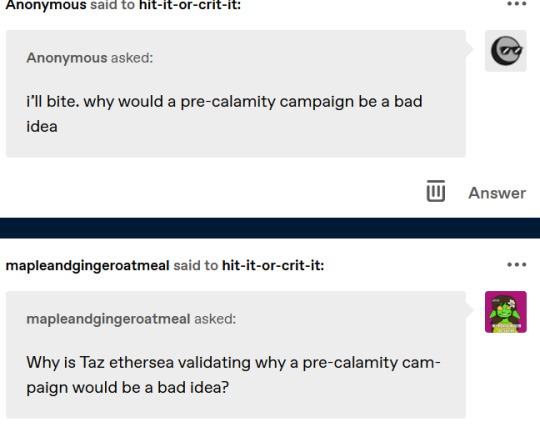
Okay first off I do want to thank you all! I think I probably would have eventually made a post, because opinions are stored in the Tumblr blog but I don't think I would have thought through it beyond the simplest answer of "actual play D&D is uniquely unsuited for a narrative with a foregone conclusion" but I think it goes beyond that and getting these questions led me to think about it much more.
Also: this post will be full of spoilers for prior TAZ and Critical Role campaigns.
That simple answer is still the right one. I'll admit I have many biases - I don't like stories where the ending is total failure, vs. something bittersweet and mixed; I am very picky about my cataclysm/apocalypse narratives; and I like to avoid spoilers and be surprised by endings. But in particular, one of the greatest elements of D&D actual play is that the long shot is possible. You can roll that 5% chance of becoming conscious instead of dying, or 15% chance of divine intervention, or what have you in a desperate situation. You still might fail, but there's a chance.
Which is one of the other great elements of D&D actual play is that the long shot failure is also possible; the 5% chance of dying sooner than expected or fumbling what should be an easy hit (or an enemy succeeding when they shouldn't).
A big part of why I'm struggling with TAZ Ethersea right now isn't actually the forgone conclusion. A big part is the mechanics, which just don't come off as terribly suited for an audio-only medium (even with the shared map, we don't get the images drawn in sync with the podcast which is what you'd need to really follow along properly). But it doesn't help that I know that when the Storm comes, they at least in some capacity make it. A lot of what appeals to me in the Quiet Year is the map-making and description of a small community and the idea of worldbuilding as the end-goal rather than a starting point, but a significant part of the premise is that the community has a year, but does not realize it. They know they have to prepare for winter, but they don't know that winter will be marked by the Frost Giants. And I don't begrudge the McElroys for using this for worldbuilding, for a number of in-game and out-of-game reasons, but the fact that they do know they have a year and that we as listeners know that obviously some kind of undersea society is able to be built after that year due to the premise of the main portion of the campaign has taken out most of the tension.*
We know how the Age of Arcanum ends. We don't know details, but we know what happens. We also know the Calamity is generations long (Halas being both a few generations after Aeor's destruction and also pre-divergence), and ends in the Divergence, and afterwards the world slowly rebuilds.
Any campaign therefore has a couple of options. Either it would have to be long before the Calamity to allow for some degree of freedom of choice in what the players are doing (which is generally not the vibe I'm getting from people interested in a pre-Calamity campaign), and also...I don't really get what that accomplishes that a new relatively unexplored location wouldn't. The other would be that it's either a campaign that never gets to any kind of significant catastrophe aversion goal (which...while I do not believe actual play casts are in any way obligated to cater to the fandom other than general sensitivity towards other people, stopping some kind of large-scale terrible event and/or big bad is a pretty central concept of the genre even when other elements of it are played with), or one that we know fails in that goal (or at least...only succeeds in saving about a third of all people) before it starts.
It's true that usually, we as viewers go into a D&D story expecting some measure of success (I could write a whole separate essay on why TPKs aren't great viewing for a long-running campaign) but CR in particular has made it clear that there is still a capacity for some amount of failure, or mixed success; there is still perma-death, or victory at great cost, or initial failure that has consequences that cannot be avoided even by later success. Something all actual play DM/GMs (and in many cases, regular old home game DM/GMs) have to do is walk that nearly invisible line where truly, success and failure are both options but total all-consuming failure is extremely difficult to achieve while still not making things seem too easy or unearned. A pre-calamity story puts that already monumental balancing act on Extremely Hard Mode because a large amount of failure as well as a small amount of success is inherently built in.
It also makes it much harder for stories like the one we had in C2 about Aeor, or for that matter, C1 about Vecna, to resonate in the same way, since both used the mystery of the pre-Calamity/Calamity eras to tell those stories. I love dramatic irony but there's a limit; there should be some mystery for the audience and players, not just the characters. If a creator puts a huge mysterious cataclysm in the past, there's a reason for that! Ethersea could have just been "it's an underwater society because it's fantasy" and that would have been perfectly fine, but it's not! That's a creative choice! The mystery of the Calamity is almost certainly by design!
In the end the thing that gets me about TAZ Ethersea is that I usually love the worldbuilding/character concept episodes of D&D shows that have them, and the Q&A/talkback episodes...but I'm learning that I want people to talk about those finished products in a big-picture way. I may be guessing here but I think people want pre-Calamity lore, but they would not actually enjoy a full, 100+ episode campaign of pre-Calamity happenings that is both hamstrung by forgone conclusions and may hamstring other stories that are to take place in the future. I think some comics, or a novel, or a small scope EXU mini-series, or like...a really long tweet thread from Matt about some pre-Calamity lore would actual satisfy that curiosity more effectively while also allowing them to preserve the important mysteries. Or, building from previous campaigns, having C3 exist a few decades after C2, where the consequences of the many archaeological expeditions and the return of the Aeormatons are becoming widespread, would similarly give us the ancient lore while still providing the open, unpredictable world actual play is uniquely suited for.
*just to make it clear: I'm complaining about the Ethersea setup epidosdes because I love complaining about things but if I actually found it wholly unenjoyable I would stop listening and skip ahead, completionism be damned. There are plenty of bright spots, mostly when they stop following the rules of the game and introduce specific character beats, and I am excited by the consequences, it's just...almost 5 hours long and still going.
#critical role#taz#taz ethersea#you know I never got super into star trek not for any real reason i just never did#but my family friends had this poster of star trek philosophy with the line having a thing is not so pleasant as wanting#and this is how i feel about so many fan theories and ships and weird fixations#i don't think people actually want the consequences of that thing or the story it tells#i think they want to want it and don't know the difference#not me though i know it#(but in all seriousness i do both believe this and also believe i fall into it at times as well)
38 notes
·
View notes
Text
Holistic Analysis of ‘Volver’ by Pedro Almodovar
tw// mentions of child abuse, pedophilia, death, blood, and sharp objects
Conduct a holistic of the film Volver by Pedro Almodovar. Be sure to integrate terminologies and concepts from course discussions on both photography and film in your analysis. Cite all borrowed materials.
-------------------------------------------------------------------------------------------
‘Volver’ by Pedro Almodovar is a 2006 Spanish film set in Madrid, Spain as well as a small village in the La Mancha Region. Upon further research, it’s noted that La Mancha is where Almodovar grew up, which indicates that this film highlights the essence of his childhood.
‘Volver’, which is Spanish for ‘to come back,’ beautifully captures the importance of women’s lives and what comes of life after death. The film is compacted with stunning architecture, camera angles, color, music and sounds, and visual images that all fit into the film’s overall message.
-------------------------------------------------------------------------------------------
Composition: I have noticed throughout the film that Almodovar chose interesting and compelling camera angles for different situations. When people walk through big doors-- mostly with the windy village in La Mancha-- the camera would be at a one-point perspective. The center of the door would be the ‘vanishing point’ of the frame so that you’ll see the rest of the hallway that the characters will soon walk down. When Almodovar films the characters going up a flight of spiral staircases, he puts the camera on the ground facing upwards in the center to show the movement of the characters. When his characters are going down the set of stairs, he changes the angle so that the camera is at the top facing downwards. When characters are walking down or off onto the street, the camera tends to follow their movement in a single shot; either in front of the characters for more intense scenes and dialogue or on the side of the characters in a distance shot to move along the plot. I also noticed his choice of car scenes. He would usually show the red car driving down a dirt road of wind turbines in a distance shot. If there were people in the back seat, the camera would shoot from the front of the car, and if it’s only one person or two they would shoot their side profiles. I also noticed that certain frames had significance to the plot as an angle would be used for multiple shots; one with Raimunda cleaning the knife before and after the murder of Paco, and when Raimunda was standing by the tree by the river after burying Paco then later that same angle was used when Raimunda and Paula visited the same spot.
Visual Cues:
Color- The main color of the film-- as well as any Almodovar film-- is red. The color symbolizes death as well as womanhood-- the passion, empowerment, and life that goes with women. The film was full of bright colors, which is a usual touch that the director loves to add to all of his films. Almodovar chooses his color precisely by the setting, as he stated in his interview with Jennifer Merin about the film. He chose to use a lot of black and white because of the location and social environment of La Mancha. Those colors, he says, aren’t ones he typically uses but were the best choice for those certain parts of the film.
Gestalt Laws:
Proximity- The closeness between Raimunda and Paula throughout the entirety of the film shows that the two are related in some way. The fact that the two characters are inseparable and are seen living together, an individual can assume that they’re mother and daughter. Paco getting constantly pushed away and being distant from the characters symbolizes the dysfunctional relationship he had with Raimunda and Paula. When Sole ran away screaming from Irene upon first meeting her, one can assume that the relationship is unwanted by the forcible distance. However, we see about 20 minutes later, Sole allows Irene into her home and ends up sleeping next to her in the night. The sudden closeness indicates the love and comfortableness between a parent and child.
Common fate- The people of Madrid and La Mancha always kissed each other’s cheeks as a form of greeting. Raimunda and Irene both had their partners murdered for doing something taboo. Irene’s husband was having an affair and sexually abused and impregnated their daughter Raimunda. Raimunda’s partner, Paco, was stabbed by her daughter Paula for sexually assaulting her. Another common fate is that Raimunda and Paula were both sexually assaulted by their fathers/father figures.
Semiotic Signs and codes:
Indexical Sign- The abundance of people are dressed in minimal amounts of clothing which indicates that the weather must be quite warm. When the characters are in the La Mancha village, the character’s clothes and hair move rapidly indicating that the area has harsh winds.
Symbolic Sign- The use of red in the women’s clothing, on and in buildings, on the furniture, vehicles, and close-ups on vegetables and blood certainly doesn’t go unnoticed. However, an individual who notices may not understand its significance. Therefore, the color red is an example of a symbolic sign in this film. It emphasizes the meaning of life after death and the importance of womanhood. Another example of a symbolic sign is the song sung by Raimunda within the film. The title of the music is the same as the movie’s title, ‘Volver’. The song is about the need for one’s life to come back, especially a mother’s, in order to move forward in life, which is an addition to the film’s message. One final example is at the very beginning of the film. The women of the La Mancha village are seen cleaning off the gravestones in the local cemetery. The way the women talked with one another made the audience indicated that this was a common practice. This scene set up the meaning of life beyond death and womanhood because only women were standing over the dead.
Purpose of the Work: A main purpose of the work was for the director to pay homage to his childhood as the movie filmed in the place he grew up and the characters were similar to the women who raised him.
-------------------------------------------------------------------------------------------
Personal Perspective:
As usual, when films start, I need to take some time to get into it. This is the same with any kind of story, even with books. But, unlike books, I can stay focused and entertained by good cinematography. The Spanish film ‘Volver’ did just that for me. The stunning single-point shots and frames kept me wanting more. I completely adored the close-up shots of characters doing simple tasks. For example, when Raimunda was putting away Tupperware, washing the dishes, and grabbing paper towels-- just to name a few-- I absolutely adored how they were shot. When the plot began to thicken, however, it was more than just the cinematography that left me breathless. The acting was incredible that I was convinced I was watching someone else’s life right before my eyes. There were many surprises that I didn’t see coming that left me on the edge of my seat the whole time. When the film ended, I had felt satisfied and unsatisfied. I wanted to know more of the story, it felt like the conclusion was only starting when the credits began to roll. But, at the same time, I was okay with how it ended because I can make up my own conclusions about how I feel the story will continue. I really enjoyed how the visuals throughout the whole film were chosen carefully to match the overall message.
Cultural Perspective:
Almodovar uses a lot of past and present aspects of the Spanish culture in his films. As he grew up in Spain, it’s something he knows well and feels most inspired from. The director is obsessed with the media of Spanish culture-- such as telenovelas, magazine stories, infomercials. Almodovar adds Spanish media to his films quite often. For example, in ‘Volver,’ he uses the idea of a film-within-a-film aspect near the end of the movie. Another example is when Paco was watching soccer on the television in the earlier shots of the film. Almodovar claims that the brightness and intenseness of the colors match the drama that Spanish films have, which is why he tends to this culture more to satisfy his creativity. A quote from a 2006 interview mentioned in an Amuse article by Colin Crummy, Almodovar states, “It is something very Spanish but it is hardly used in Spain. It corresponds both to my personality and the baroque behaviour of my fictional characters. Explosions of colour fit in very well with high drama.”
Critical Perspective:
There were multiple mentions of child abuse and pedophilia within the film. One example is that Raimunda’s father abused and raped her as a child that led to the birth of Paula. Near the beginning of the film, there was an up-close shot of the fourteen-year-old girl’s private spot indicating that Paco-- the supposed father-- was looking at it, and he was creeping on her while she got undressed in her room. After a few scenes roll by, we see Paula waiting for her mother at the bus stop in the rain looking petrified. After Paula didn’t give a clear answer, we see Raimunda finding Paco’s dead body on the kitchen floor. Paula began to explain the whole event of the assault that led to her stabbing him in detail. The aspect of child abuse and murder is enough to provoke a strong response from the viewer. The whole event is extremely traumatizing that will make people talk about it afterward. A major theme throughout this film is death and the afterlife. The superstitions of spirits visiting you before you pass on overflowed the village. Irene was thought to have passed in a fire four years prior to the story’s timeline. So, when she had visited her sister who was dying, many suspected that it was her spirit helping the living pass on. The idea of death and the afterlife is a difficult topic to bring up in conversation, so it wouldn’t be unusual if someone had felt uncomfortable. There were many ways death occurred within the film; stabbing, old-age, a house fire(that was intentional), and cancer. Each death-- and the reason it happened-- can provoke an emotional response from the audience. The running themes and cultures of the film will leave anyone’s mind wondering: what’s next?

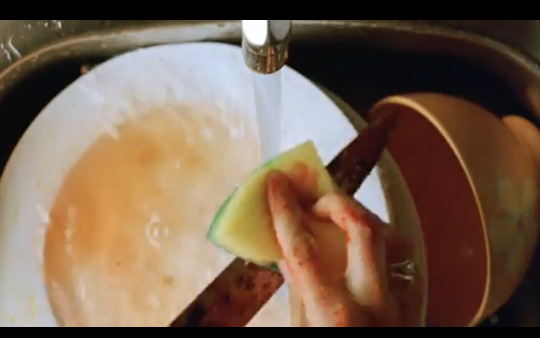
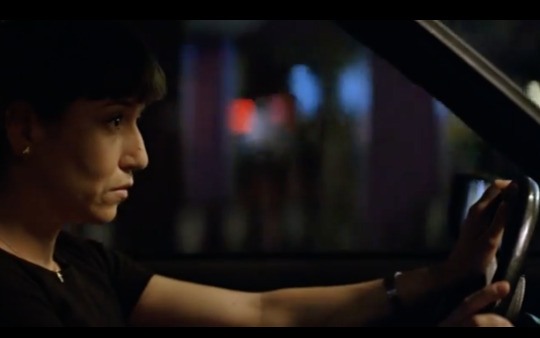
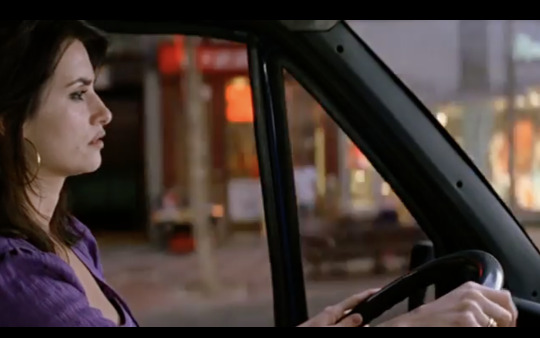
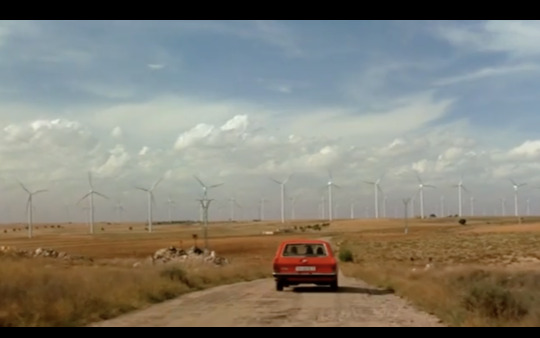
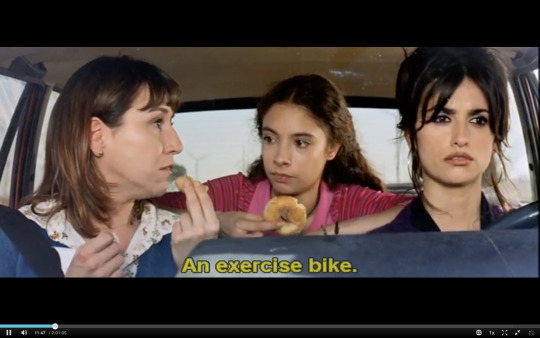

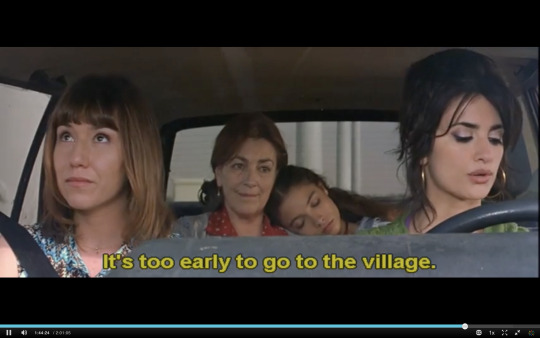

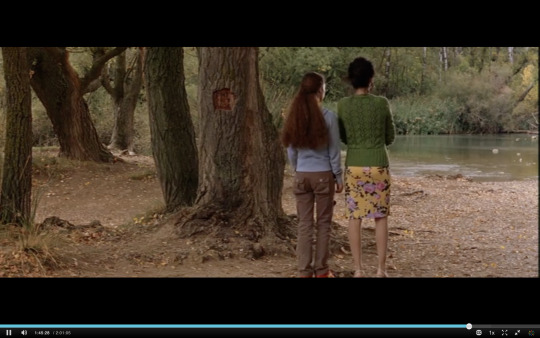
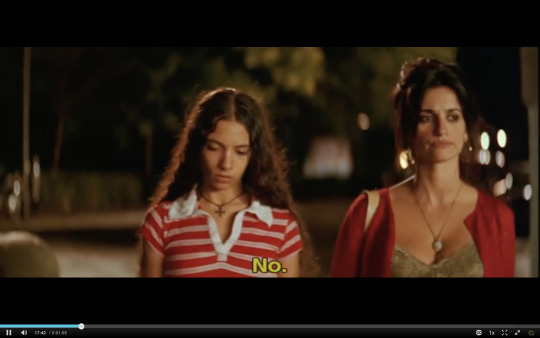
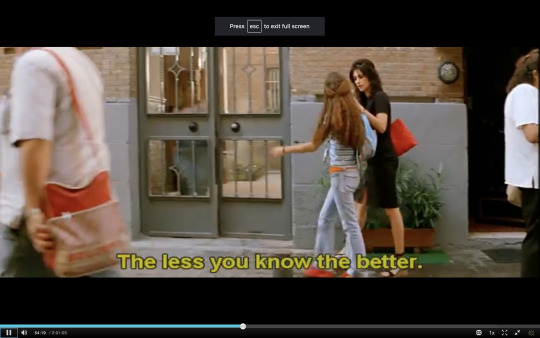
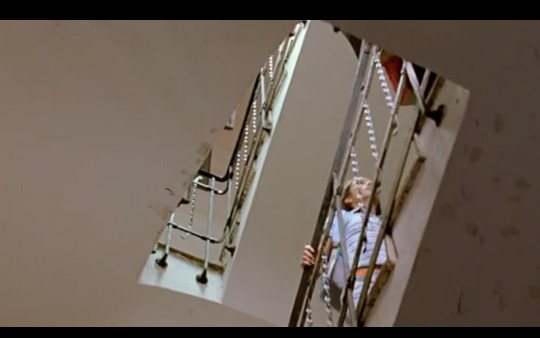
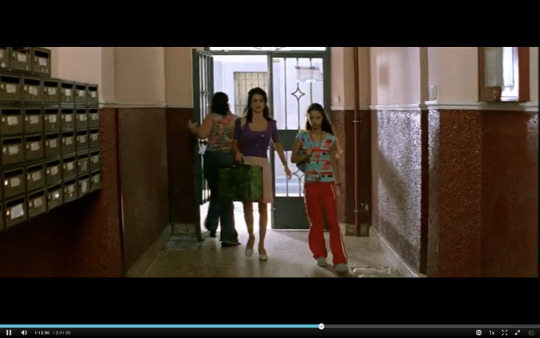
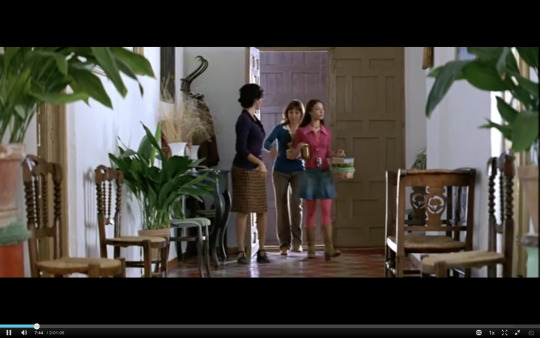


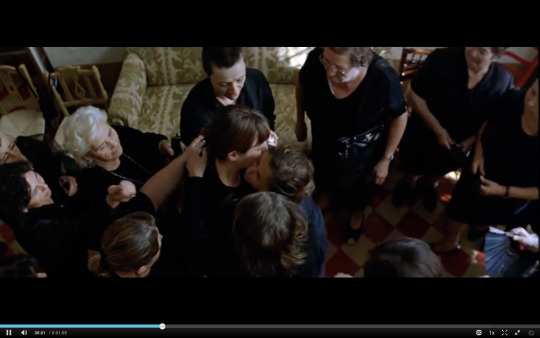
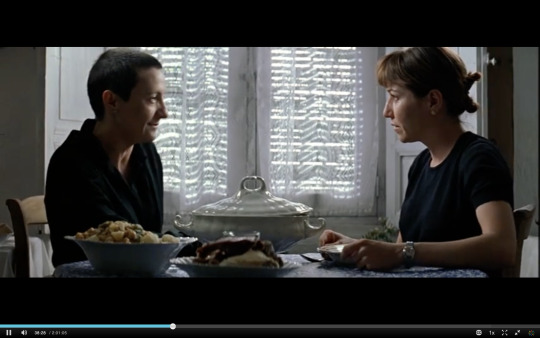
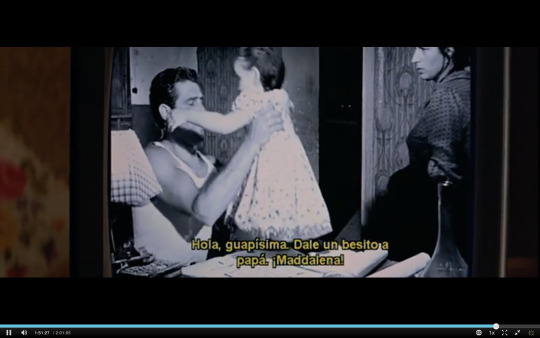


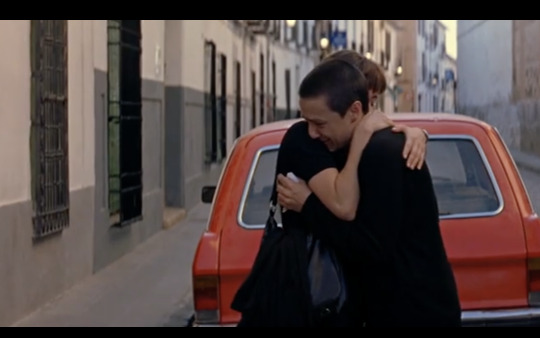
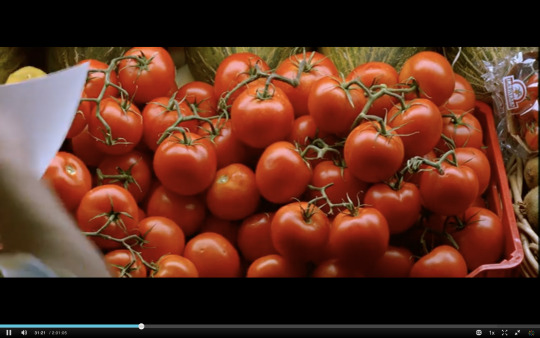
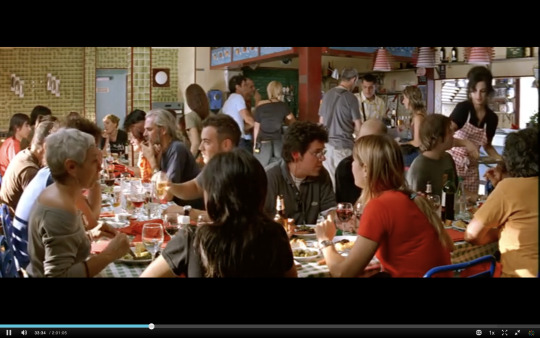
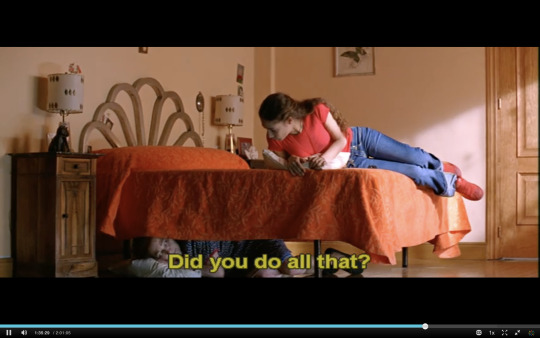
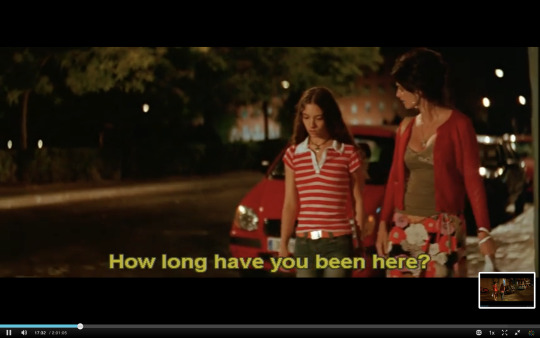

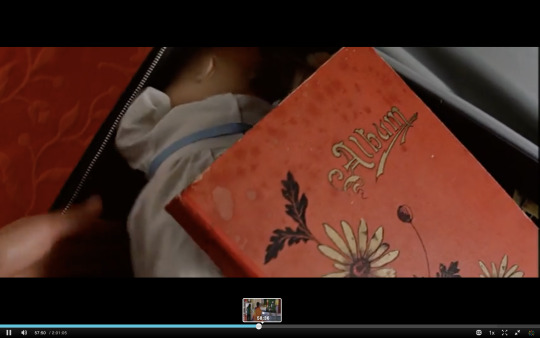
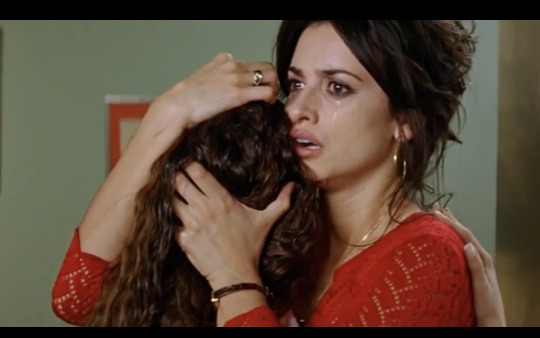
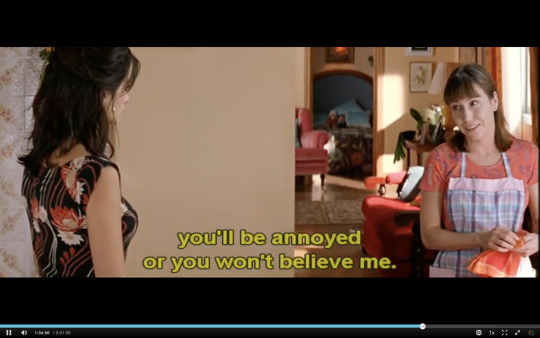
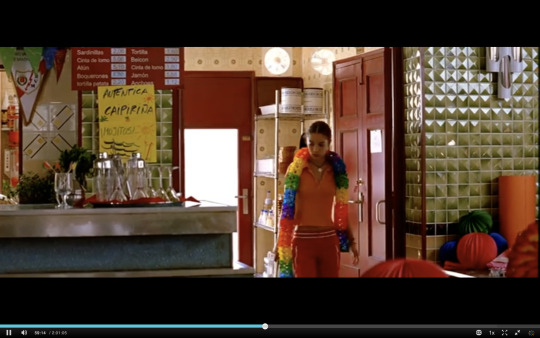
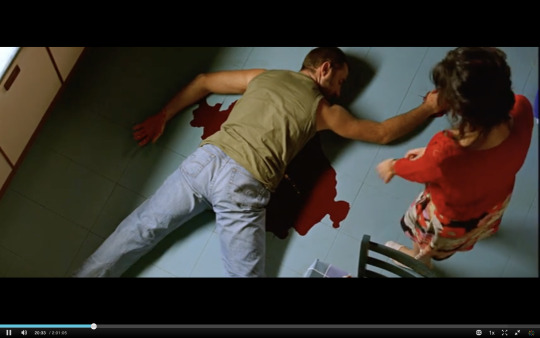

---------------------------------------------------------------------------------------
References
Merin, Jennifer. “Jennifer Merin Interviews Pedro Almodovar Re ‘Volver.’” ALLIANCE OF WOMEN FILM JOURNALISTS, 13 Dec. 2006, awfj.org/blog/2006/12/13/jennifer-merin-interviews-pedro-almodovar-re-volver/.
Team, Amuse. “A Musical Tour of Ibiza.” Amuse, 24 Mar. 2021, amuse.vice.com/en_us/article/bvg3p4/a-musical-tour-of-ibiza.
Lester, Paul Martin. Visual Communication: Images with Messages. Sixth ed., Michael Rosenberg, 2014.
Almodóvar, Pedro, Agustin Almodóvar, Esther García, Penélope Cruz, Carmen Maura, Lola Dueñas, Blanca Portillo, Yohana Cobo, Chus Lampreave, Antonio . Torre, Carlos Blanco, José L. Alcaine, and Alberto Iglesias. Volver. , 2006.
19 notes
·
View notes
Link
With her NCIS: Los Angeles run having come to an end, Renée Felice Smith is ready for her next chapter — somewhat literally, being an author as well as an actress.
In the CBS drama’s Season 12 finale, Smith’s Nell Jones made the decision to not officially sign on as the “new Hetty”/Operations Manager, but instead join partner Eric Beale on an adventure to Tokyo, to head up his tech venture. But before driving off into the sunset, Nell briefly reunited with long-MIA Hetty herself, in costar Linda Hunt’s first on-set appearance of the season.
With NCIS: LA bidding adieu to both her and scene partner Barrett Foa, Smith — who joined the show early in Season 2 — spoke with TVLine exclusively about that emotional if bittersweet Nell/Hetty reunion, being an inspiration to smart girls, and what’s next for her as a legit storyteller herself.
TVLINE | How did you learn that this would be your swan song, and what was your initial reaction?
Well, I think it’s complicated. I mean, I think that I’ve been ready for my next chapter for a while now, in whatever form it will take. But it’s surely to be centered around storytelling. I hesitate to be part of the “cliché actress” calling herself a storyteller, but I really am one. I’m a writer. I’m a director. We are developing television currently. We have another indie in the works. I want to tell compelling stories, poignant stories that offer an escape and chance of reflection for the viewer, so that’s where my focus is.
TVLINE | But as far as Nell leaving, I for one was quite surprised, because I felt like this season was such a journey for the character. They’d really been shaping her to assume this position of authority.
It’s so true. I absolutely loved Nell’s journey this season. She really got to stand in her power. She really found her voice, and as a young woman it was empowering to play that side of the scene. Nell, I think, is a natural leader, and I really do think her strength as a leader is her vulnerability. I think that Nell has empathy for all players involved in the story. She can see multiple sides of the story. She’s a person that’s not only intelligent but she has emotional intelligence, and that has been such a gift for me as an actor to play. I’ve just loved her evolution, really. She started as a sidekick and she really, quite effectively, was the boss this year, and I had a fantastic time playing it.
Kilbride (played by Gerald McRaney) recently spoke to her unique strengths, saying to “stop asking yourself what would Hetty do” and just be Nell.
And that really is such a necessary message. There’s a scene that I absolutely love with Miguel Ferrer, my dear Miguel, from a while back, and it was a similar sort of scene where he was trying to instill confidence in her as a leader. I actually have the quote: Miguel’s character, Granger, says to Nell, “Never belittle yourself or your accomplishments. You deserve the respect you’ve gotten. You’ve earned it.” I remember feeling so choked up in that scene, and I’ll get choked up now thinking about it.
Kilbride, similarly to Granger, has a real kind of affection for Nell and saw that potential in Nell. He wanted to foster her confidence in herself, and it was very moving to play those scenes. I feel like as a young woman we are often in a position where we may doubt ourselves just because of the social climate, but in the end I think it’s about trusting yourself. Nell really grew into a person who started trusting herself and making decisions for her, rather than trying to please. I’m a natural-born people pleasure, and I think Nell is, too. High-functioning overachievers always are. So, I think Nell’s decision at the close of the season really is her ultimately finding her voice and really having agency over her future and what it is she wants to do.
I know how difficult that is. It is reflective of my own journey and my own life. So, to be able to step forward and say, “You know what, this is the path I want to take now and I’ll potentially disappoint people while doing it, I commend Nell for her bravery in that.
What did it mean to you have Linda Hunt back for one final scene with you?
Oh, my God…. My heart. Linda is just a magical creature. To have her back was really quite emotional. She was essentially sidelined by the pandemic, as you could imagine, so to even see her in the flesh, let alone share a scene with her
TVLINE | And a hug.
And a hug, come onnnn! Chef’s kiss, you know? And the scene is really a bittersweet reunion. Nell really wants nothing more than to stay and catch up with her mentor, but she can’t. So, it’s kind of this “goodbye for now” scene.
TVLINE | [Showrunner] Scott [Gemmill] told me that Linda was thrilled to be back on set.
She was like a kid in a candy shop. She was glowing. She was crackling. She was so alive in the scene. Whenever I’m in a scene with Linda, I’m a student. She really is such a master of the craft, and I’m a little sponge. I’m soaking it all up, and really, truly watching her work has been the most educational process for me. I just feel like truly I’ve been attending the MasterClass with one of the best, one of the greats, and I’m so grateful for my friendship with her as well. She’s my bud. She texts me lots of emojis.
TVLINE | You once told me about how you would go to lunch and you’d get all these Hollywood stories, including about her “Mary Tyler Moore moment” when she first went to live in New York….
My God, she dropped that story on me right before a walk-and-talk where I had tons of technical jargon, and I remember I was welling up just at the image of 16 or 18-year-old Linda Hunt getting into a cab and drinking in the big city and the possibilities that it held for her. She’s such a gift.
How nervous were you to shave Barrett’s mustache?
I knew we only had one take and I knew it had to be good. My mom is a hairdresser and I watched her kind of do all of that kind of beard shaping for years, so I just kind of channeled my mom. I knew I needed a steady hand, and I just went for it. But I think he was a little nervous.
TVLINE | Would you like to be a part of Episode 300 (airing late next season), if asked?
Of. Course.
TVLINE | What’s next for you?
Like I said, storytelling. We just released our first children’s book, Hugo and the Impossible Thing, which is inspired by our canine son Hugo. Chris [Gabriel] — my partner, my other half, my creative partner — and I wrote the book about our dog who recovered from a really life-threatening illness. It was an inoperable brain tumor that most everyone told us would be impossible to beat. But through the help of some truly brilliant doctors and Hugo’s own determination, he made it to the other side and he lived a full life. It was this miracle that we witnessed, and we knew we needed to pass on Hugo’s message and let it inspire others.
I think oftentimes challenges in life are labeled as “impossible” when in reality they’re just extremely difficult. Of course, yes, certain things are impossible — I’m not going to be 6-foot-2 any time soon — but most of the time an obstacle or a challenge is just something we have to work our way around. So, we created the metaphor of the impossible thing. It’s out in the world now.
TVLINE | Lastly, any message for the fans?
Oh, for sure. Ultimately, I could say something profound but I just want to say thank you. Thank you for respecting Nell. Thank you for embracing Nell, for embracing her intelligence. I’ve always been cast as kind of the “funny friend,” the quirky turkey. I was the nurse in Romeo & Juliet when I auditioned for Juliet in high school. But with Nell, I really got to play so much more, and I am just so grateful to have been able to play the “smart girl,” quite frankly.
Someone actually shared a really touching story with me not long ago, actually. I was standing in line at a coffee shop in New York, and I heard this kind of grumble behind me. Someone asked, “Are you Nell Jones from NCIS: LA?,” and I kind of winced, afraid to turn around. I know native New Yorkers, I was thinking, “What did I do wrong? Did I accidentally cut the line or not cover my mouth when I sneezed?” So, I turned around to face this person and they proceeded to tell me about their 12-year-old daughter who wasn’t like the other girls in her class. She was interested in science and forensics and computers. This woman told me that a lot of times as a mother, she didn’t know what to do with her daughter, and that Nell and the character that I played for the last 10 years had helped her daughter to find some confidence in who she was and what she wanted to be.
So, if my time at NCIS: LA helped a young girl to see the possibility in pursuing a career in intelligence or technology… visibility is everything. If the image of Nell Jones as the brightest bulb in the room can instill confidence in a 12-year-old girl and affect her future, I mean, that’s the ultimate win. That’s it. That’s truly more than I ever could have asked for.
16 notes
·
View notes
Text
Is It Too Late to Apply? - The Bachelor Season 25, Week 1 Recap

All images from abc.com
I am a feminist and hate how society continually pits women against each other to compete for men. But two hours a week, for 8-10 weeks a year, I put all of that aside because I LOVE The Bachelor. Give me all the chaos, the drama, the make-outs, the heartbreaks, and the ridiculously sparkly dresses you have. I will watch every second of it and live-tweet the whole thing without an ounce of guilt.
I’m very excited about this new season because there have been almost no spoilers (maybe they should do every season in a bubble?). Just to clarify, I never seek out spoilers, but sometimes they show up on my twitter feed and accost me without my consent. I am promising now; if that does happen for this season, I will not include them in my recaps. Anyway, let’s begin.
It makes sense to start by introducing the bachelor, especially because he’s completely new to Bachelor Nation, Matt James.
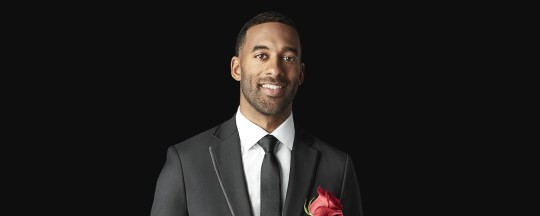
Matt James is the first actually hot bachelor in a long time. Colton and Nick Viall were both cute, and Arie and Pete were fine, but Matt James is literally gorgeous. He was supposed to be on Clare’s season until she called him out for using being on her season for clout. To clarify, the “clout” he was using was to get donations to the charity he runs, ABC Food Tours. And his clout did not come from being on her season as much as from being the best friend of the one and only Tyler Cameron. If you are new to Bachelor Nation, Tyler C, as he is (extremely) affectionately called, was the heartthrob of the second most recent season of The Bachelorette. He came in second that season but bounced back quickly by dating Gigi Hadid. Tyler did try to make it work with his bachelorette, Hannah Brown, during quarantine (Matt was also quarantining with them), but they broke up a few months ago.
Because Matt is new to Bachelor Nation, we really don’t know much about him. From the introduction package, we learned that he is mixed-race, and his parents separated when he was young. He also says he has never been in love before, which has made some audience members wary of his position as the bachelor.
His newness also means that he also doesn’t know a lot about the process, and watching him navigate through it with doe-eyed wonder makes him even more charming. We saw his nervousness when he asked Chris Harrison for a fireside chat before the girls started arriving. Chris gave some of his patented Chris-Harrison-advice about love, but they also had a very real conversation about race, which is not something usually seen on this show. Matt voiced his fears about what people will say if he picks a White girl or a Black girl, which was great because The Bachelor usually operates with a “we don’t see race” mindset, which is problematic for obvious reasons. The season of The Bachelorette that ended just two weeks ago featured a Black bachelorette getting engaged to a White contestant. I have not seen any commentary about this, but I’m sure it’s out there; I’m just lucky enough to follow good people.
This season had a record number of applications, and there were 32 contestants on the first night. It would be insane to go through every single one of them, mainly because I don’t remember all of them, so I am just going to discuss the five that stood out to me.
Katie

Katie’s limo-entrance was the cold open of the show, as she introduced herself to Matt James while holding her vibrator. To call this a bold move may be the biggest understatement of all time. I am all for female empowerment and being open about female sexuality, but this was a lot. Especially when she clarified that it had been cleaned, meaning it was not brand new as I had assumed. I don’t care how much she scrubbed it; that’s gross. Also, as another girl was talking to Matt about how the hurricanes had affected her family in Puerto Rico, Katie came up and interrupted her by tapping the girl on the shoulder with the dildo. Whatever the conversation was, that was a weird move. During that specific conversation, it’s rude. If you’re going to do something like that, you have to hold back a second and figure out what the conversation’s vibe is before you interrupt. Still, I like Katie. I think she’s cute and funny. She could go far in this show, as long as she does not rely on the dildo-bit too much.
Khaylah

Nothing about Khaylah blew me away, but she made her entrance in her truck and made that connection to Matt of both being from North Carolina. During the cocktail party, the two of them sat in the bed of the truck under the stars in an adorable moment. In a sea of 32 girls, I was able to remember her (though I did have to look up her name), which I think is a good sign for her with Matt.
Abigail

Abigail and Matt had a great conversation about her being hard of hearing and how it’s difficult for her to talk about when starting a new relationship. Matt, who had stressed his own difficulty with being vulnerable, appreciated her openness. Abigail got the first real kiss of the season, as well as the coveted first impression rose. This rose can be a great sign, as the receiver usually goes far in the competition, and three bachelorettes in a row ended up getting engaged to the person who got this rose. That being said, just last season, Tayshia’s first-impression-rose, Spencer, immediately faded to the background before being cut two weeks later. Still, I am going to keep my eye on her.
Kit

Kit is already a polarizing figure. She’s 21 years old, a self-proclaimed socialite, and the daughter of famous fashion designer Cynthia Rowley. She watched the premiere on Monday with Charlotte Lawrence and Kaia Gerber. For these reasons, plus her saying in a confessional that she loves being the center of attention, people are calling her spoiled, too young, and “not there for the right reasons” (a favorite phrase of Bachelor Nation). I like Kit, though. I think she is unapologetically herself, and I have to admire that. In addition, I think The Bachelor has gotten so big that we have to assume almost every contestant goes on with the thought that maybe they get engaged, but at the very least they’ll get a revolve sponsorship. It’s also clear that she is not going to be the season’s villain, at least not at first.
Victoria

That title is going to go to no other than “Queen” Victoria. Yes, for her career, Victoria listed herself as a queen. She made poor interns carry her in, wore a tiara, and gave Matt a crown so he could be her king. During the cocktail party, she got way too drunk and tried to pressure a girl to talk to Matt by saying “literally” too many times. She also spoke to him three times, while others talked to him zero. This isn’t uncommon on the first night, but it’s still looked down on. Also, she interrupted Kit’s time by saying, “excuse me, princess, the queen is here,” igniting a feud that will be entertaining as all hell to watch. She also got the final rose of the night, signaling to the viewer that the producers made Matt keep her on for the drama. My prediction is all the girls hate her, and she fuels drama for the beginning, but ultimately gets sent home week 3 or 4, so that actual relationship drama can begin. After that, we’ll see her for sure in Paradise.
Matt sent home eight girls, Alicia, Emani, Saneh, Amber, Corrinne, Carolyn, Cassandra, and Kimberly. Alicia was a professional ballerina, which is pretty impressive, and Cassandra’s sister made a funny TikTok about her getting sent home.
#the bachelor#matt james#the bachelor season 25#abc#abc bachelor#bachelor#abc the bachelor#Matt James the bachelor#television#television recap#television review#tv#tv recap#tv review#season 25 week 1#the bachelor week 1#the bachelor Matt james#the bachelor season 25 week 1#the bachelor victoria#the bachelor kit#the bachelor Khaylah#the bachelor katie#the bachelor abigail#girlsgonemild#girls gone mild#girls gone mild blog#season 25#week 1#kit keenan
16 notes
·
View notes
Text
Interview with Jerome Hiler and Nathaniel Dorsky, May 2021, Leeds, U.K. to accompany an outdoor screening hosted by Will Rose
WR The screening of your work in Leeds will be outdoors in a field at Meanwood Valley Urban Farm. It will be dark of course, but the films will be set against the backdrop of the city and accompanied by the sound of the outdoor environment. I’m interested in how these local conditions might affect your work. What do you think about this, and have you ever screened your work outdoors?
ND When Jerome and I were in our early twenties we would leave New York City for a summer evening at my parents’ house where there was a backyard bordering a forest. We would have outdoor screenings using two projectors and enjoy the superimposed images and their many chance occurrences. San Francisco does not have windless warm evenings and the summer nights are particularly cold, so the inspiration to do this type of screening does not come naturally. But this summer, with the Covid crises restricting our social and screening lives, we had two screenings for six people each on the backyard patio of filmmaker Scott Stark. We were all dressed for a winter sleigh ride and masked with distance between seating. I showed three films I had made so far during the lockdown, one of which, Temple Sleep, you will see this evening. What was particularly lovely were the swaying tree shadows on the screen from the surrounding window lights going off and on. The film felt like it was floating within a larger cinema.
JH Of course, silent films are extremely vulnerable to ambiance, yet there are always margins, and some are larger or smaller so it’s impossible to predict what is too distracting or not. Every screening is a law unto itself. No two are alike – even when there’s an immediate repeat screening. When I send my films out to be rented, they’re like children old enough to be on their own. I wish them luck. That’s about all I can do. Back in 1964 I roomed with Gregory Markopoulos and we were always trying to find some spacious outdoor setting for a night time screening. It never came about, but I feel now that I saw the beginning of an idea that eventually led to his Temenos events in Greece.[1]
WR You have each largely kept your personal filmmaking practice separate from your ‘day jobs’ (Jerome as a carpenter and documentary director, Nathaniel as a film editor) – to what extent did/does your daily work influence or affect the films you make, and vice versa?
ND As an editor one has to be very strict sometimes with a client for their own good … you witness the naked self-deceptions … so when you are working on your own film you almost laugh when this dialogue takes place all within yourself … you see the importance of not deceiving yourself … you see the way you fib to yourself …
JH It has been some time since I worked as a carpenter. The work was all-engrossing and I hardly had a chance to have my films affect that particular work. However, the money I made certainly allowed me to make films. When I was young, I admired the filmmakers who had day jobs that supported their work. I also worked on documentary films and there it was a case of my personal films influencing my documentary style.
WR Your work is very much concerned with the act of filming in the moment – an idea which also seems to extend to the way you would like your films to be experienced. I’m curious about the role history and memory play into this presentness. When you film somewhere, is the history of that place important to you? And are your own memories of that place important to the way you respond to it in the moment with your camera?
ND For me it is the presences and dissonances of light that guide my camera into the world. Generally I am not trying to evoke a place, but in the film Temple Sleep I shifted in that direction; in this case seeing a series of fly casting practice pools as the flooded ruin of an ancient temple of the past.
JH I generally wander at random. Driving in my car – particularly in places that I don’t know, hoping to get lost. I will react to a location. I don’t set out to make a statement, rather I learn and am tutored by the film as it develops. My film has more to say to me in the long run than the reverse. All art works seem to be self-portraits.
WR I understand that you often show your work to friends in private salon screenings. Until relatively recently this was the only situation that Jerome’s work would be presented in. Can you tell me more about these private screenings? And when you make your work, is it is useful to have a particular viewer (someone you know) in mind?
JH Now that I’m shown publicly, I’m often asked why I “withheld” my work. But, as far as I was concerned, I was sharing my work as much as I could. Living in San Francisco, I was ensconced in such a vibrant and busy film scene with many visiting filmmakers coming through and showing their work. There were many impromptu screenings at different people’s homes. For my part, I would create tailor-made “films” from my camera original to suit the person or people who were attending that night. Then, I would dismantle the reel and re-purpose material for another occasion. This process of using original film resulted in much loss over the years. But, as for making a finished film, I had not found a voice and my attempts, I feared, might be pretentious. Suddenly, I was asked to be in a film show and I quickly finished a film in progress. In this way, I had found my very casual voice.
WR You have been life-partners since the mid-1960s and make films principally for each other. Can you tell me more about how your work converges and diverges?
ND Jerome taught me half the things that I know. His earliest filmmaking awakened me to the open glories of self-symbol montage, that a film is something in itself! Jerome is a bit more the painter and I, a bit more the poet.
WR During the pandemic I have increasingly had the urge to be somewhere that I don’t recognise. I was fascinated to find out that your work is almost entirely filmed within a very small radius of your home in San Francisco. Why is this the case?
ND This is an exaggeration … although it is true that many of my films are shot in walking distance from my apartment. But I would often in normal times go downtown with my camera in a car, park and walk around in a variety of neighbourhoods and environments. I could no longer shoot street or human scenes as if the Covid was not happening.
The real issue is that when you travel and shoot footage the footage is seldom as good as something you shot that you are very familiar with. When it’s familiar you have to work harder to make it touch something in the psyche … but a new place is all awe and seduction of the new but the footage one might take there is often not really so interesting as cinema. I have some travel films I’ve made on Kodachrome and have occasionally shown them in my apartment and once publicly at Anthology Film Archives. They looked gorgeous with the original camera Kodachrome going through the projector – now that is a heart stopper.
WR You both have a close affinity to poetry and have found ways to create an equivalent sensation using the medium of film. Nathaniel, I showed your work in Leeds a few years ago in the presence of a very wonderful local poet. Without any prior knowledge, he appreciated it instantly as the filmic equivalent of a poem. Is there some intrinsic essence you can identify which makes film poetic?
ND When film can create for the viewer feelings and intuitions, associations and discoveries, things that cannot be directly said, then it has poetic qualities. Not the false poetry of sentimental narrative, but the sharp present alert quality of light and the screen.
JH I think my films are more akin to music than poetry. Some musicians can tell me what tempos and dance forms my works employ. My subject matter is so truly personal that I doubt anyone else could follow a “narrative.” Though, I have heard a viewer’s re-telling of my film that was both true and sidesplittingly hilarious. You might wonder, “Do I have no regard for my viewer?” Actually, I hope that there is always something for the mind of the viewer to engage with along with the feeling that what you see and feel is, indeed, the heart of the film. The film is really yours. I remember, over so many years, tedious post-film discussions where a viewer stated their reaction and asked the filmmaker, “Was that intentional?” My answer would be: If that’s what you saw, yes, it was.
WR The way light, weather and vegetation are measures of seasonal change is important in almost all your work. How do the seasons play a role in structuring the way you make films?
ND Like poets for many thousands of years, the change of seasons stirs the soul, awakening primordial feelings of birth, death and desire and the need to “sing” of such things.
WR The pandemic has put a temporary stop to public screenings of work that necessitates film projection. This screening of your work in Leeds is a gentle re-connection with a type of art that has been in hibernation. What has been your response to the last year? Have you worried for the future of your art form?
ND I just kept on shooting and vaguely wondering what damage the Covid crises would have on handmade films in public arenas. Luckily my film lab was allowed to stay open as an essential business … I could not agree more … and Eastman stayed open for purchasing raw stock. I found it very difficult to make a film during this crises – though I ended up making six … many quite short as the world had become smaller. I spent weeks at various places in Golden Gate park, a half block from my apartment. After three weeks or so ideas for making films in those locations took place and manifested. It was hard photographing things with this ominous lurking presence, but I found a way by relating to the oppression and trying to make films that were a purification for the impending claustrophobia.
JH This is a very good question. The issue of impermanence has arisen most powerfully this past year. I find myself at an advanced age. I read complaints that my films are impossible to see outside of the larger venues in film capitals. My attention, as usual, has been on the making of films and not at all on their exhibition. I have never felt that video was akin to film. For me, it did not present itself as a substitute. I am considering, very seriously, transferring my films to a digital format. I do dislike the light of digital projectors, but I have to face the fact that loyalty to my first love is taking too large a toll on my work’s appearance on any screen at all.
[1]. Temenos is the name filmmaker Gregory Markopoulos gave to a remote outdoor screening site in the Peloponnese region of Greece. Markopoulos spent the last decade of his life working on Eniaios, an epic, 80-hour film cycle created exclusively for projection at this site. The next presentation screening will take place there in summer 2022. See: www.thetemenos.org
3 Films by Nathaniel Dorsky and Jerome Hiler | Outdoor Screening, Fri, 21 May 2021, Leeds, U.K. link
6 notes
·
View notes
Text
BLOGTOBER 10/7/2020
I missed THE GOLDEN GLOVE at Fantastic Fest last year. It was one of my only regrets of the whole experience, but it was basically mandatory since the available screenings were opposite the much-hyped PARASITE. As annoying as that sounds, it was actually a major compliment, since what could possibly serve as a consolation prize for the most hotly anticipated movie of the year? Needless to say, I heard great things, but I could never have imagined what it was actually like. I'm still wrapping my mind around it.

Between 1970 and 1975, an exceptionally depraved serial killer named Fritz Honka murdered at least four prostitutes in Hamburg's red light district. Today, we tend to think of the archetypal serial killer in terms of ironic contradictions: The public is attracted by Ted Bundy's dashing looks and suave manner, and John Wayne Gayce's dual careers as politician and party clown. Lacking anything so remarkable, we associate psychopathy with Norman Bates' boy-next-door charm, and repeat "It's always the quiet ones" with a smirk whenever a new Jeffrey Dahmer or Dennis Nilsen is exposed to the public. The popular conception of a bloodthirsty maniac is not the fairytale monster of yore, but a wolf in sheep's clothing, whose hygienic appearance and lifestyle belie his twisted desires. In our post-everything world, the ironic surprise has become the rule. In this light, THE GOLDEN GLOVE represents a refreshing return to naked truth.

To say that writer-director Fatih Akin's version of the Fritz Honka story is shocking, repulsive, and utterly degenerated would be a gross understatement. We first meet the killer frantically trying to dispose of a corpse in his filthy flat, wallpapered with porno pinups, strewn with broken toys, and virtually projecting smell lines off of the screen. One's sense of embodiment is oppressive, even claustrophobic, as the petite Honka tries and fails to collapse the full dead weight of a human corpse into a garbage bag, before giving up and dismembering it, with nearly equal difficulty. The scene is appalling, utterly debased, and yet nothing is as shocking as the killer's visage. When he finally turns to look into the camera, it's hard to believe he's even human: the rolling glass eye, the smashed and inflated nose, the tombstone teeth and cratered skin, are almost too extreme to bear. Actually, suffering from a touch of facial blindness, I had to stare intently at Honka's face for nearly half the movie before I could fully convince myself that I was, in fact, looking at an elaborate prosthetic operation used to transform 23 year old boy band candidate Jonas Dassler into the disfigured 35 year old serial murderer.

Though West Germany remained on a steady economic upturn beginning in the 1950s and throughout the 1970s, you wouldn't know it from THE GOLDEN GLOVE. If Honka's outsides match his insides, they are further matched by his stomping grounds in the Reeperbahn, a dirty, violent, booze-soaked repository for the dregs of humanity. Though its denizens may come from different walks of life, one thing is certain: Whoever winds up there, belongs there. Honka was the child of a communist and grew up in a concentration camp, yet he swills vodka side by side with an ex-SS officer, among other societal rejects, in a crumbling dive called The Golden Glove. The scene is an excellent source of hopeless prostitutes at the end of their career, who are Honka's prime victims, as he is too frightful-looking to ensnare an attractive young girl. These pitiful women all display a peculiarly hypnotic willingness to go along with Honka, no matter how sadistic he becomes; this seems to have less to do with money, which rarely comes up, and more to do with their shared awareness that for them, and for Honka too, it's been all over, for a long time.

Not to reduce someone’s performance to their physical appearance, but ???
To call Dassler's portrayal of Honka "sympathetic" would be a bridge too far, but it is undeniably compelling. He supports the startling impact of his facial prostheses with a performance of rare intensity, a full-body transformation into a person in so much pain that a normal life will never become an option. His physical vocabulary reminded me of the stage version of The Elephant Man, in which the lead actor wears no makeup, but conveys John Merrick's deformities using his body alone. Although there is an abundance of makeup in THE GOLDEN GLOVE, Dassler's silhouette and agonized movements would be recognizable from a mile away. In spite of his near-constant screaming rage, the actor manages to craft a rich and convincing persona. During a chapter in which Honka experiments with sobriety, we find a stunning image of him hunched in the corner of his ordinarily chaotic flat, now deathly still, his eyes gazing at nothing as cigarette smoke seeps from his pores, having no idea what to do with himself when he isn't in a rolling alcoholic rampage. The moment is brief but haunting in its contrast to the rest of the film, having everything to do with Dassler's quietly vibrating anxiety.

Performances are roundly excellent here, not that least of which are from Honka's victims. The cast of middle-aged actresses looking their most disastrous is hugely responsible for the film's impact. These are the kinds of performances people call "brave", which is a euphemism for making audiences uncomfortable with an uncompromising presentation of one's own self, unvarnished by any masturbatory solicitation. Among these women is Margarete Tiesel, herself no stranger to difficult cinema: She was the star of 2012's PARADISE: LOVE, a harrowing drama about a woman who copes with her midlife crisis by pursuing sex tourism in Kenya. Her brilliant, instinctive performance as one of Honka's only survivors--though she nearly meets a fate worse than death--makes her the leading lady of a movie that was never meant to have one.

So, what does all this unpleasantness add up to, you might be asking? It's hard to say. THE GOLDEN GLOVE is a film of enormous power, but it can be difficult to explain what the point of it is, in a world where most people feel that the purpose of art is to produce some form of pleasure. This is the challenge faced by difficult movies throughout history, like THE GOLDEN GLOVE's obvious ancestors, HENRY: PORTRAIT OF A SERIAL KILLER, MANIAC and THE TEXAS CHAIN SAW MASSACRE. Describing unremitting cruelty with relentless realism is not considered a worthy endeavor by many, even if there is real artistry in your execution; some people will even mistake you for advocating and enjoying violence and despair, as we live in a world where huge amount of movie and TV production is devoted to aspirational subjects. (The fact that people won't turn away from the Marvel Cinematic Universe movies, no matter how monotonous and condescending they become, should tell you something) How do you justify to such people, that you want to make or see work that portrays ugliness and evil with as much commitment as other movies seek to portray love, beauty, and family values? Why isn't it enough to say that these things exist, and their existence alone makes them worth contemplation?

A rare, perhaps exclusive “beautiful image” in THE GOLDEN GLOVE, from Fritz Honka’s absurd fantasies.
You may detect that I have attempted to have this frustrating conversation with many people, strangers, enemies, and friends I love and respect. I find that for some, it is simply too hard to divorce themselves from the pleasure principle. I don't say this to demean them; some hold the philosophy that art be reserved for beauty, and others have a more literary feeling that it's ok to show characters in grim circumstances, as long as the ultimate goal is to uplift the human spirit. Even I draw the line somewhere; I appreciate the punk rebellion of Troma movies as a cultural force, but I do not enjoy watching them, because I dislike what I perceive as contempt for the audience and the aestheticization of laziness--making something shitty more or less on purpose. A step or three up from that, you land in Todd Solondz territory, where you find materially gorgeous movies whose explicit statement is that our collective reverence for a quality called "humanity" is based on nothing. I like some of those movies, and sometimes I even like them when I don't like them, because I'm entranced by Solondz's technical proficiency...and maybe, deep down, I'm not completely convinced about "humanity", either. However, I don't fight very hard in arguments about him; I understand the objections. Still, I've been surprised by peers who I think of as bright and tasteful, who absolutely hated movies I thought were unassailable, like OLDBOY and WE NEED TO TALK ABOUT KEVIN. In both cases, the ultimate objection was that they accuse humans of being pretentious and self-deceptive, aspiring to heroism or bemoaning their victimhood while wallowing in their own cowardice and perversity. Ok, I get it...but, not really. Why isn't it ever wholly acceptable to discuss, honestly, what we do not like about ourselves?
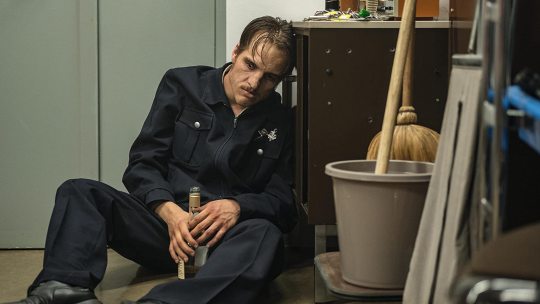
The beguiling thing about THE GOLDEN GLOVE is that, although it is instantly horrifying, is it also an impeccable production. The director can't help showing you crime scene photos during the ending credits, and I can't really blame him, when his crew worked so hard to bring us a vision of Fritz Honka's world that approaches virtual reality. But it isn't just slavishly realistic; it is vivid, immersive, an experience of total sensory overload. Not a square inch of this movie has been left to chance, and the product of all this graceful control is totally spellbinding. I started to think to myself that, when you've achieved this level of artifice, what really differentiates a movie like THE GOLDEN GLOVE from something like THE RED SHOES? I mean, aside from their obvious narrative differences. Both films plunge the viewer into a world that is complete beyond imagination, crafted with a rigor and sincerity that is rarely paralleled. And, I will dare to say, both films penetrate to the depths of the human soul. What Fatih Akin finds there is not the same as what Powell and Pressburger found, of course, but I don't think that makes it any less real. Akin's film is adapted from a novel by Heinz Strunk, and apparently, some critics have accused Akin of leaving behind the depth and nuance of the book, to focus instead on all that is gruesome about it. This may be true, on some level; I wouldn't know. For now, I can only insist that on watching THE GOLDEN GLOVE, for all its grotesquerie, I still got the message.
#blogtober#2020#the golden glove#fatih akın#heinz stronk#jonas dassler#margarete tiesel#difficult cinema#horror#slasher#serial killer#period piece#adaptation#historical#biopic#fritz honka#i may have been watching a lot of powell and pressburger movies recently#sorry...
23 notes
·
View notes
Link
*Amy Roberts is nominated for an Emmy in Outstanding Period Costumes for episode 10 Cri de Coeur.
The third season of The Crown, Netflix’s lavish, semi-fictionalized series about Queen Elizabeth II and her family, sees the monarch, Prince Philip and Princess Margaret entering middle age. Claire Foy hands off the role of Elizabeth to Olivia Colman, with Helena Bonham-Carter and Tobias Menzies joining the cast as her sister and husband. Kicking off in 1964 with a Soviet spy scandal ripped from the headlines and ending with the Queen’s 1977 Silver Jubilee, this season of The Crown also covers events some viewers will remember firsthand. Though paparazzi activity hints that the show’s fans are ardently awaiting Princess Diana’s season four entry (and luckily for them, filming wrapped about a week before coronavirus lockdowns were instated), season three is a nuanced historical and personal portrait of the family making their way through a politically pivotal era, from Margaret’s charming of President Lyndon B. Johnson to Prince Charles’s investiture in Wales.
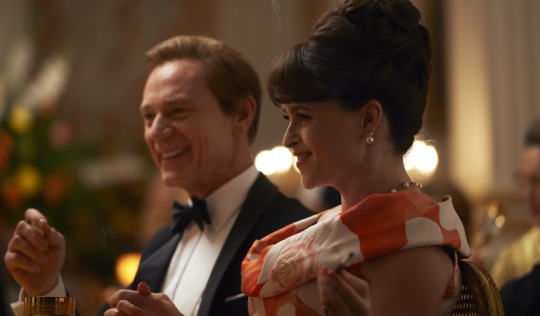
The season also spans one of the 20th century’s most distinct time periods in terms of fashion. Working with a team that can number from 45 people up to 130 on the biggest shooting days, costume designer Amy Roberts joined The Crown for seasons three and four, taking over from Jane Petrie and previously, Michele Clapton. Roberts balances the royal family’s distinctly staid aesthetic with glimpses of the styles of the era, seen on younger characters like Princess Anne (Erin Doherty) and Roddy Llewellyn (Harry Treadaway), Margaret’s youthful, long-term affair.
Queen Elizabeth, however, is still at the crux of every episode, and for the monarch, Roberts embraces an early version of the vivid colors and matching ensembles that have come to dominate her personal style. We spoke with the costume designer about building imagined looks versus hewing to history, her personal style favorites from the season, and the new hues that set the tone for the Queen’s next half-century of outfits.

How do you decide whether to put together new looks or look to history for costuming major, well-documented events, like the Queen’s Jubilee, Prince Charles’s investiture, or the tragedy of Aberfan?
I think it’s an emotional decision. And those big events, particularly Aberfan, it doesn’t make sense to veer away from it. Often, some generations remember it very clearly, and it would seem arrogant of me to even think, oh, I’m going to change history. That’s my strong feeling. Those are a few very key, important moments, but there is so much on The Crown where you don’t know what they wore, you don’t know what they said, you don’t know what went on, so there are plenty of other times when you can let your imagination run free or be more filmic. That’s the joy of The Crown.
Queen Elizabeth has such an interesting style legacy because you have people who think she’s the most fashionable woman in the world, as well as a camp that finds her rather dowdy. What’s your opinion, and what guides you as you’re designing for her?
Well, I was one of those people who thought the Queen’s dress-sense-look-style was not of great interest or groundbreaking. But the more I looked at her, not just my period of time — the 60s through the early 90s, up through season four — you realize she’s actually amazing. You can see where a lot of designers have drawn inspiration, whether it’s Dolce and Gabbana or Vivienne Westwood. So I was really surprised. And the color choices, they’re absolutely extraordinary, even in the present day. I know she dresses to be seen in vivid colors, but she owns it. You see her privately at Balmoral, maybe in her kilt and her twin set and some scarves, and she looks amazing, with a Burberry mac on. There are some really weird ones, like the investiture, but they’re always interesting.

The royal family has an aesthetic unto itself, which isn’t necessarily representative of the era. There are so many fashion hallmarks of the 1960s and 70s in particular, which are not things the Queen would ever wear. Was it difficult to conceive of costumes that illustrate the time period while still being accurate to the family?
The first two seasons, which are absolutely beautiful, had the aesthetic of the 30s, 40s, and 50s color palette. I suppose in a way what opened the door for us in this era was color. We have a huge wall in our studio where we put up lots of images, each member of the royal family’s journey, in a huge chart. And I think what everybody realized was it’s the color — those sugar pinks, lemon, tangerines, and turquoises — suddenly you’ve got that, which you hadn’t got before. I think Jane [Petrie] slightly touched on it towards the end of season two, but we could really go for that, those more synthetic tones that heralded in the 60s and 70s, those post-war colors and patterns.

And as we get closer to modernity, can you buy and rent costumes for supporting characters, or is everything purpose-built?
All the principals are designed and made, but what we could start to do in this era was introduce a little bit of buying, for Princess Anne and some of the important smaller parts. The budget’s fantastic, but you can’t afford to make everyone, nor do you have the time. It’s got to be the best quality, obviously, but you can source the 60s and 70s clothes pretty easily. We didn’t do that at all for the Queen — maybe an old Burberry mac, actually — but for Princess Anne, we introduced a few buys, some knitwear, and we found some fantastic jeans. And obviously, for the crowd, that is all sourced and hired from costume houses in England, a little bit in Spain, and we used a fantastic place in Paris.
The real royals wear fur. How do you deal with that for the show?
Quite rightly, Netflix and Left Bank have a policy of no fresh fur. But you can use, and we would use, fur from the late 50s. Margaret and the Queen do occasionally wear fur coats, much to the horror particularly of Olivia Colman. They [Colman and Bonham-Carter] don’t love it at all. I have to stress that: there’s no enjoyment to them wearing fur coats. But you might be thinking about Charles’s investiture robe. There’s a good story there. That had to be made from scratch. The lining of that cloak is ermine. That was problematic because we could only use old ermine. They came from all over, the color had to be matched, they had to be cleaned and stretched by a furrier, and there aren’t many furriers anymore. But they had to be a certain date, none of it was fresh fur. It’s absolutely forbidden. So that took a long time to source, do it properly, and within strict guidelines. And it’s hard for actors, sometimes. They want a sign saying “this isn’t me, I don’t approve!” We only used fur coats when it was absolutely needed, and the odd fur stoles, but we steered away from it as much as possible.

Did you have a favorite character to dress in season three?
I always say this, but I loved doing Princess Alice of Greece, Prince Philip’s mother, the nun [Jane Lapotaire]. Because suddenly, after all that pomp, silk, and patterns and color, you do something completely different, and pure and simple. I don’t know, I just loved that beacon in the midst of it all. And I loved doing Wallis Simpson; her clothes and style were just very modern. The palette we went for was a personal favorite of mine. So Princess Alice and Wallis Simpson — two extremes, really, both as women and as looks.
#olivia colman#tobias menzies#helena bonham carter#the crown#ben daniels#josh o'connor#erin doherty#jane lapotaire#geraldine chaplin#charles edwards#jason watkins#costume design#the crown netflix
17 notes
·
View notes
Photo


Masked Omens: Week Five
[Image Description: Image 1 - A simple rendition of the Masked Singer UK logo, a golden mask with colourful fragments flying off of it. The mask has a golden halo and a golden devil tail protruding from either side. Below, gold text reads ‘Masked Omens’.
Image 2 - A page from the Entertainment section of the Capital Herald, dated Saturday, 23rd January 2021. Full image description and transcript below cut. End ID.]
Read the fic here!
The Capital Herald - Saturday, 23rd January 2021
Entertainment, page 15
Top section:
Stream of Consciousness: Shows To Make You Think
A whole host of great documentaries, old and new, have just been added to streaming services
Who doesn't love a good documentary? You can learn all sorts of things, and you don't have to do any of the research for yourself. Over the last couple of weeks, loads of people seem to have been tuning into the wealth of documentaries available on various streaming services; here are a few I particularly enjoyed.
Green Planet (2020) is not your standard nature documentary; while there are some extremely cute shots of animals (including gorillas, whales, and giant squid) the main focus is on sustainable practices people are experimenting with in all sorts of industries and contexts, and the way they allow local wildlife to flourish. It's thought-provoking stuff.
We're As Folk (2019) takes a look at the contemporary folk movement, interviewing figures from the second British revival right through to the present day; contributors include Seth Lakeman, Frank Turner, Anathema and Bellowhead. With folk-festival anecdotes aplenty, the documentary explores the intricacies of the genre and culminates in all the contributors performing a once-in-a-lifetime rendition of 'She Moved Through The Fair'.
Gadget If You Can (2015) might be a little outdated now, but that's what makes it such a compelling watch. From watches that tell the time in 21 capital cities concurrently to hoverboards that actually, well, hover, this is a fascinating look at the new devices that seemed to be just on the horizon when it was released more than five years ago. Some have since appeared; some remain pipedreams. All are interesting!
Making Fast Friends (2012) is the oldest documentary on this list, and the narrowest in scope. It was released alongside the SEGA charity single 'Fast Friends' and gives us a behind the scenes look at what happened when Sonic the Hedgehog teamed up with a whole bunch of children's TV presenters to make the record. Although largely factual in nature, it does also feature animated 'interviews' with Sonic and Knuckles, so it's entirely suitable for watching with your family. And P-White fans, in particular, will not want to miss this a second time around.
A War Without War (2021), by contrast, is both up-to-the-minute and extremely disturbing to watch. It is composed of a mixture of expert analysis of the situation developing on the ground in Celestan and grim footage allegedly smuggled out of the country by fleeing residents. Moreover, with more episodes promised, it forces the viewer to acknowledge what is happening as the country breaks apart, and asks us the difficult question: can you have a war without war?
Dinosaurs: The Punchline (2013) is frequently mistaken for a mockumentary thanks to its tongue-in-cheek title. It is, in fact, a thoughtful exploration of how religious groups respond to apparent conflicts between scientific facts and the tenets of their faith. Without shying away from the realities of science as we know it, this film takes a surprisingly sensitive approach to investigating how science and religion intersect in the modern world.
By The Numbers (2018) looks back at the history of the televised National Lottery, along with its competitors on other channels and the entertainment chosen to appear directly after it. Featuring clips and interviews with stars from Marjorie Potts aka Telepathic Tracy, whose show aired after the draw for over a decade, to Marvin O. Bagman, whose sports-based quiz show had, at the time of the documentary’s release, the corresponding Channel 4 slot. It’s not groundbreaking, but it is very entertaining.
CITRON DEUX-CHEVAL
Have I missed any amazing documentaries you think I should be talking about? Drop me an email at [email protected] or leave a comment on our website and I might feature your recommendations in a future issue.
Centre left:
Memory Lane: Kilcridhe
Now there’s a vicar I’d have loved to meet at the altar
Ask any male-attracted person of a certain age – well, my age and up, really – if they remember Kilcridhe, and you'll be met with flushed cheeks and a glassy expression. We remember Kilcridhe, all right – or perhaps it would be fairer to say that we remember Father Jacob MacCleod.
It's hard to believe that heartthrob Jacob was Anthony Crowley's first major role on television, and harder still to believe that he was also one of his last. The show ran for only two six-episode series, between 2005 and 2006, but in those twelve hours I think it's fair to say a fair few of us fell irrevocably in love.
Kilcridhe was named for the fictitious Scottish village where it was set, and largely revolved around the goings-on of the local church and its new minister. Much of the series' drama centred around Father MacCleod's ongoing attempts to fill the pews, which saw him trying everything from hosting a bake sale – for which he ended up baking everything himself – to arranging a community talent show, with predictably bizarre results. But during the course of these adventures, each episode also introduced us to one or more of Kilcridhe's residents. We got a glimpse into the little struggles and joys of their lives – most of which quickly became Jacob's struggles and joys, too.
My main memory of this show is that it was pretty. Not just Jacob, but everything about it, from the location they chose for the exterior shots, to the tone added in post-production; everything was just slightly more saturated and colourful than real life, not enough to be jarring but enough to give the whole thing a strangely dreamlike feel. In fact, as Jacob remarked as he prepared to leave for Edinburgh at the end of series one (not knowing if he would return or if the show would be cancelled), “leaving [Kilcridhe] feels like waking from a dream, like going back to reality somehow”.
It was, perhaps, for the best that Kilcridhe was cancelled after only two series. Shows originally envisioned as limited series rarely keep their charm past a second extension, and the central actor was to encounter personal problems not long after the end of the show. That's not to say that a revival couldn't work, perhaps with a completely new protagonist.
But Father Jacob MacCleod lives on in the hearts of his many fans, smiling that enigmatic smile of his, and when that's not enough, there's always online fanfiction. So much fanfiction.
SARAH JEUNE
Memory Lane is our regular feature, looking back at the books, shows and films of yesteryear through a nostalgic lens. Do you miss something you’d like to see featured? Just send the show name (plus channel and airdates if you know them) in an email to: [email protected] - your prayers might just be answered!
Centre right:
Correspondent’s Corner
Stop talking about it
Anathema is making waves again as she does the talk-show circuit to promote her new album, Narrative Devices. It's a very pretty album from a very lovely girl, but she does keep getting hung up on one point. Every time somebody describes her music as country, she interrupts to tell them it's folk. Well, I'm no music expert, but even I know that folk is a very European genre, and the United States' equivalent is country, or country and western music, to give it its full name, and to continue to argue to the contrary is simply courting controversy for controversy's sake.
It is unbecoming of a young lady – even, or perhaps especially, a young lady with Anathema's obvious talent – to continue to argue with her elders on the subject, and even to correct the likes of Graham Norton and Giles Brandreth. These sage bastions of broadcasting deserve more respect, and they couldn't be more gracious in accepting their 'mistake'. But surely a young musician in the first flush of success should take the time to learn about what she's actually doing? It doesn't seem very much to ask.
It’s not entirely her fault, of course; the youth of today are given far too much freedom by their parents and, on top of that, are often propelled to disproportionate success with no chance to prepare for it. Is it any wonder that it all goes to their heads? But there is no excuse for not making an effort to keep their egos in check and defer to their betters on matters of terminology and best practice.
Naturally, we all hope that Anathema will enjoy a long and successful career making the music she enjoys the most and , more importantly, music we can all enjoy too. And I also hope that she will, eventually, acquire the humility so rarely found in young people these days and accept that she does not always know best. If she listens to the counsel of older and wiser heads than hers, she might even learn something.
ANDY SANDALPHON
What can’t they do?
If there's one thing that's becoming apparent with every passing week of The Masked Singer UK, it's that celebrities are no longer to content to stay in their lane. No, these multi-talented marvels seem determined to push themselves to the limit in every possible field.
So far, we’ve seen sergeants become singers, rugby players become rockers, doctors become divas and authors become, er, audible. And with weeks still to go in this competition, we still have eight masked celebrities to guess. Eight people whose day jobs probably don’t include getting on stage and belting out pop standards are still waiting to impress us with talents that aren’t even their thing. I mean, if I could sing and dance like the contestants on the show, you can bet your life I’d be making a living from it. It would be my number one talent, and I’d be rubbish at anything else, because most of us only get one main skill. Not these jammy gits, though. For them, this is a sideline.
It's not just The Masked Singer, of course – from proving their talent for trivia on Pointless Celebrities and their wordplay wisdom on Celebrity Catchphrase to demonstrating their culinary qualities on Celebrity Masterchef and The Great Celebrity Bake Off, it seems that wherever you look someone is adding a new string to their bow. Being a phenomenally talented actor, singer, or footballer is all well and good, but more and more stars are now keen to show us that they really can do anything and everything.
And why shouldn't they? It's phenomenally entertaining television to watch. And for those of us who sometimes feel inadequate compared to our famous idols, it can be very reassuring to watch, for example, a comedian weeping into his cupcake mix on Bake Off or an Oscar nominee fall on her face on Dancing On Ice. When they do well, it's amazing; when they do badly, it's life-affirming.
That said, I've been blown away by the talent of the contestants on The Masked Singer this series. It's so inspirational, in fact, that I might take up watercolours.
EDWARD BIGGS
Bottom right (in blue box):
Citron’s Quick Picks
Fast favourites from Citron Deux-Cheval
Look: Sea Change by Hastur LaVista
There's never been a journey to to the top quite like P-White's. This authorised biography charts a course from children's presenter to global superstar through interviews, pictures and anecdotes. While the research sometimes seems a little slapdash, the story at the heart of the book is more than interesting enough to hold it together. And since it's authorised, Maputi themself has contributed plenty of private insights and observations.
[Image description: A book, its cover featuring a blue-green gradient with black, dripping lines spilling across it. The title reads ‘Sea Change’. End ID.]
Listen: Narrative Devices by Anathema
Anathema's first album was well-received both within the folk community and beyond it. Now her second album, backed up by an obvious increase in resources, looks set to enjoy similar mainstream success, and deservedly so. The theme this time seems to be the act of telling stories, but it's also a story in itself. You'll have heard the singles, but it takes on new meaning when you play it in order!
[Image description: An album cover featuring hands holding a book. The words “Anathema” and “Narrative Devices” are printed on it. End ID.]
Laugh: Newtral Stance by AutoTuna on YouTube
It's not the first time beleaguered commentator Newton Pulsifer has had his words edited into a supercut. It's not even the first time his frequent disagreements with the VAR have been autotuned – including by YouTube user AutoTuna. But this new edition adds an extra dimension in the form of a flat, robotic voice duetting – and duelling – with the frustrated human, taking the hilarity to a whole new level!
[Image description: A screenshot of a young woman wearing a call centre headset (specifically, the woman who cold-calls Crowley in Good Omens and gets Hastur instead). She looks extremely bored. End ID.]
Advertisement, bottom right:
IS THIS YOUR CARD?
[Image Description: Two business cards with a white-to-yellow gradient, overlapping so that they are slightly fanned out. Printed on the left-hand side of each is ‘This is to certify The Amazing [blank] as a [blank] training under Mr A.Z. Fell.‘ The one behind is filled in with ‘Your Name-’ and ‘Sorcer-’. The front card is filled in in a more child-friendly font, with ‘Your Name Here’ and ‘Junior Magician’. Below this is space for a start and expiry date, filled in with ‘08/20′ and ‘08/21′ respectively. On the right-hand side of the card, a logo shows a rabbit emerging from an upturned top hat, and below it are the words ‘Harry’s Junior Magic Academy’. The word ‘Junior’ is in the same child-friendly font as before. End ID.]
IT COULD BE.
Membership is open to under 12s and 13-18 year-olds at
www.harrys-magic.com
End of transcript.
1 note
·
View note
Text
This is a (meandering, non-exhaustive) overview of Homestuck’s use of

by which I do not mean examples of psychological realism in a character’s words and deeds, but rather the various means by which characters’ psyches are expressed outside of themselves. I wish to elaborate on how thoughts, feelings, and desires may find expression in the environment, in the medium of the story itself, and in the form of other characters.
That’s perhaps a little vague, so here’s a ready example of what I mean: brainghost!Dirk. He talks with Jake, but since he is a construct of Jake’s mind, Jake is essentially talking to himself. Brainghost!Dirk is an alienated medium for voicing Jake’s own thoughts, irretrievably distorted through its intermingling with what Jake thinks/wishes Dirk would say (not unlike a puppet). I am claiming that this mode of characterization is not a unique to Jake; the blurring of inner and outer voices is omnipresent throughout the story.
Or, rephrased: what I hope to show is that a great deal of Homestuck is haunted with brain-ghosts, of one kind or other.

An early example of this kind of storytelling in science fiction would be the film Forbidden Planet (1956). The film contains a pair of conflicts which eventually reveal themselves to be one: the scientist Morbius wants some space explorers to get off his planet, and an immense monster (pictured above) appears during the night to attack the explorers. Morbius, it turns out, has been experimenting with a machine capable of turning thought into reality. So when Morbius sleeps, his dream of driving off the trespassers materializes in the form of beast that forcefully enacts the wish.
The beast is declared a “monster from the id”, the “id” being a concept borrowed from Freudian psychology, indicating the part of the mind responsible for the unfiltered generation of impulses, of urges. In the film, this passing mention of psychoanalysis precedes the revelation of Morbius’s link to the beast.
Homestuck hints towards its own mixing of thought and reality with a device similar to Morbius’s dream machine: Sburb.

A snapshot of Dave’s Sburb client (1519) shows that the final subprograms launched during the games installation make reference to terminology associated with Carl Jung and Sigmund Freud. The terms suggest that Sburb interacts with the ideas in the kids’ subconscious minds (archetypes) and brings symbolic representations of these ideas into conscious reality (manifests the ideas). The game alters the means by which reality is constructed. As with Forbidden Planet, a major result of this is id monsters.
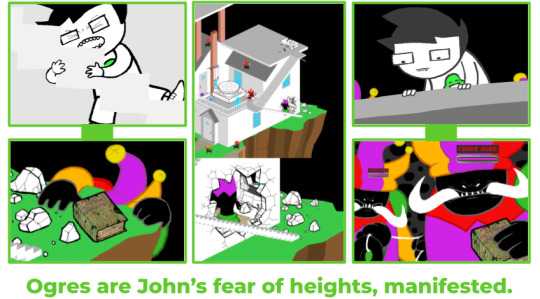
When John slips on a staircase, he flips out (left, 560). And when he nearly launches himself into the abyss with the Pogo Hammer, he has to take a nap before he has calmed down enough to continue (center, 637). Immediately following both moments of vertigo, massive ogres appear. The eventual fight with the ogres begins after John looks over the edge of the platform above his house, into the abyss (right, 662).
All of this suggests that Sburb is reacting to John’s emotional state (fear) to produce in-game content. The game functions as a waking dream.
It should also be noted that Sburb provokes the reactions it elicits. Karkat once mentioned a nagging feeling that the game was mocking him by giving him a planet covered in the candy red blood he had spent a lifetime attempting to hide (2301). Karkat’s paranoia seems to be correct here, and moreover applicable to the cast in general -- John’s house was likely placed atop an immense spire /in order to/ bring John’s dread of falling into sharp relief. The suspicion can be substantiated with a few related motifs.

The story provides two likely origins for John’s fear of heights: his own fall from the slime pogo as a child (2626) and the death of Nanna, which John believed resulted from her falling from a ladder and being crushed by a book (52). What’s more, Sburb’s invocation of the Fall of Man (Adam and Eve being cast from the Garden of Eden) via biting into an apple hints that there is an allegorical significance to John’s more literal fear of heights.
We can apply these patterns to other characters in an attempt to learn more about them. LOLAR being covered in ocean suggests that Rose is afraid of water, with the likely cause of Rose finding Jaspers dead and washed up on a riverbank (presumed drowned). Dave speaks openly about how his sword fights with Bro left him anxious of metal sounds (7749), meaning the grinding gears of LOHAC were a personalized hell for Dave. Jade’s first imp manifests in response to the sight of a yellow aurora (2998), inviting the reader to investigate why that image invokes a fear response.
But we won’t get to into all of that, not for now at least. Let’s take a step back.

For my reading of the imps as manifestations I’ve been leaning heavily on a piece of film theory devoted to the effects of sequential images. The sequence above constitutes two observations. One, that by this arrangement the viewer will infer the old man sees and reacts to the middle figure. Two, that the viewer’s impression of the old man will change based on the content of the central image, even if his expression is the same. Is he smiling at Nepeta or warm embrace Marvus’s armpit? The answer may influence your interpretation of the little smile.
The neat thing about montage is that the interrupting frame need not bear any obvious relation to what precedes or follows in order to be subject to a causal reading. Moments that occur sequentially can be read as triggering one another, even if what follows any particular moment appears to be a break rather than a continuation.
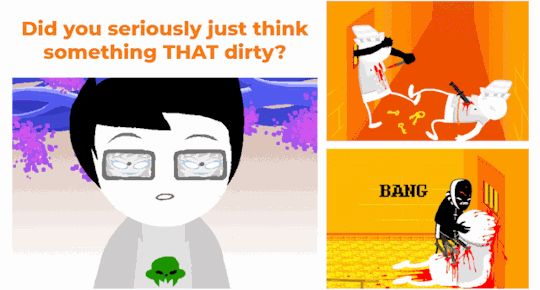
Example: There’s a moment where Aranea walks into Jake’s dream, and brainghost!Dirk immediately starts razzing Jake about his attraction to the alien girl and threatening to give him a boner. The scene is interrupted by Jack committing a series of gratuitous murders. We then cut back to Jake, and bg!Dirk is now teasing him about his dirty thoughts.
DIRK: You have got to be kidding. Did you seriously just think something THAT dirty?
DIRK: You must be doing this on purpose to spite me now. I mean, just wow dude. That was x-rated as fuck.
JAKE: (No no stop. See youre talking about it and now i cant help it!)
JAKE: (You are psyching me into having dirty thoughts get fucking lost you interloping brain douche!!!)
DIRK: Don't worry, I'm gone. It's like a goddamn peep show in here and I feel like a sleazy piece of shit watching this from a dark corner of your mind.
DIRK: You have a graphic imagination, English. I'm kind of impressed.
JAKE: (Shut up theyre just thoughts its not even like im trying to have them THEY DONT MEAN ANYTHING!)
The ostensible joke is that bg!Dirk is exaggerating or outright fabricating his account of Jake’s thoughts in order to hassle him. But by way of montage, one can infer that we /have/ seen Jake’s dirty thoughts, in the form of Jack’s display of overwhelming bloodlust. Violence is superimposed over the sexually explicit.
Whether the scene literally takes place in Jake’s mind is secondary (though such a reading would explain why Jake’s brain ghost is even aware of Jack) -- the use of montage allows Jack’s actions to function as a /metaphor/ for Jake’s thought.
Another example of Jack functioning as a murderous/libidinous avatar would be the death of Mom and Dad. At their little tea party, Dad spills some wine on Mom’s clothes and declares that she must disrobe immediately (so that Dad might launder the garment). Mom calls the aromas wafting from his pipe sensuous. The two clasp hands and declare that all they need is eachother. Then they die! The joke is that while Bec Noir is ostensibly an interruption to date night, he also functions as its culmination, with murder acting as substitute for the sex act.
The link between violence and sexuality is perhaps a hard sell, but I hope to convince you that the reading holds merit. Let me emphasize that the very act of Mom and Dad holding hands was itself sexually loaded.

I owe to HS liveblogger elfstuck the insight that John’s linear 3 card sylladex is a reflection of his short attention span. Consider how John’s role as a game character means he is thrown all around his room, back and forth, as the player figures out what to make of the situation. If you ignore the fourth wall, you’re left with an extremely distracted person, who attention flows easily from one object to another. Accepting the object-in, object-out nature of John’s sylladex and the resulting shenanigans as a metaphor for this, it would follow that the sylladex in general can offer an abstract representation of thought.
In passing, I can mention how the enormity of Jake’s sylladex (it cannot even fit on the page, and contains an object that exceed most players’ size limits) would imply that despite evidence to the contrary, the boy likely has a big brain (and perhaps its being offscreen suggests Jakes own unawareness of much of his own thought). Dirk’s comment about avoiding items that are difficult to shoehorn into his mnemonic schema (4535) could be read as a difficulty maintaining information that doesn’t fit into his personal mental models. The sylladex becomes a metaphor for the mind that requires interpretation.
Under this mode of thought, the moments when Jade’s pictionary modus fails to correctly interpret her drawing become akin to a mental slip-of-the-tongue. For the Tanglebuddies to be misread as enmeshed hands implies an association, in Jade’s mind, of horny Squiddles and clasped hands. John affirms the association much later by miming Tanglebuddies as he attempts to grapple with the question of whether Jade and Davesprite are sexually compatible (5294):
JOHN: how do things even work if you marry a sprite?
JADE: what do you mean
JOHN: i mean...
JOHN: ok, he has a ghost butt, for one thing.
JADE: uh
JADE: so
JOHN: a GHOST BUTT, jade!
JADE: SO WHAT IF HE HAS A GHOST BUTT!!!!!
JOHN: i'm just saying...
JADE: WHATEVER YOURE JUST SAYING, JUST STOP SAYING IT!
JADE: and whatever youre trying to gesture with your hands there, stop doing that too!

It should also be noted that before launching into her “daring dream”, waxing poetic on the miraculous union of the human and the animal with her hands clasped in wonder, Jade successfully captchalogued the Tanglebuddies (796). And more to the point, Jade’s pose in reproduced during discussions of cherub (5961) and leprechaun (6007) reproduction. Hand-holding becomes representative of an (oft-sexualized) union, underlining the euphemistic nature of Mom and Dad’s post-contact demise.
The next example of using montage to communicate thought requires a little more buildup.

There’s a gag in Rose’s introduction where the reader tells Rose to play with her writing journals, and scoots the journals under the bed and retorts that she would only do that if no one were watching (220). At first glance, the moment scans as a minor meta joke in a story filled with meta jokes -- but the trick is that Rose does not /know/ herself to be a video game character, her every movement controlled and observed. Rather, she /believes/ this to be true -- the joke about being watched establishes that Rose is paranoid, as will become apparent in the hostility she assigns to Mom’s every action.
The command prompt and narration are themselves brain ghosts of a sort: the voice deployed in them is always linked to the present point-of-view character. The insults that precede character introductions ( “Zoosmell Pooplord”, etc) become marks of anxiety, an intrusive proclamation of what the kids at times think of themselves (and/or what they think others think of them). “Nice time management skills, sweetheart!” becomes a bit of self-deprecation Rose as she procrastinates, which Rose experiences as having been voiced by some objective observer who judges her deficiencies.
A blurred line divides characters from the voice at the back of their head, belonging to the (presumed) omniscient, omnipotent author-god. This is why avatar!Hussie is dressed as Calliope when he is killed by Lord English. Both Calliope and Hussie are a voice in Caliborn’s head, and thus both present apparent obstacles to an unmediated self.
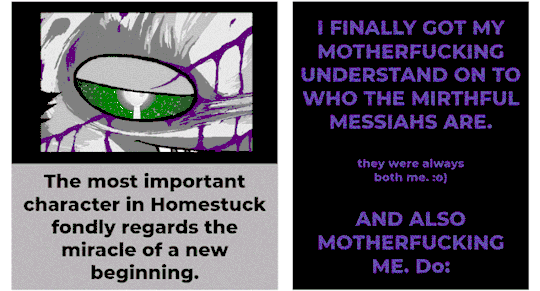
The left panel (3219) foreshadows the right (3358). Gamzee is not being declared the objectively most important character in Homestuck. Rather, Gamzee is declaring himself /to have been declared/ the most important character in the story. The line establishes that Gamzee believes himself to be in a story (with an author!) and that this author has declared him paramount. Furthermore, “fondly regarding creation” is an modus operandi of Problem Sleuth’s Godhead Pickle Inspector. Applying that turn of phrase to Gamzee’s actions further establishes that Gamzee believes himself to /be/ the god-author declaring his own importance. So it should come as no surprise that 137 pages later, Gamzee outright proclaims himself to be the god(s) he worships.
Going back to montage, it becomes interesting that this snapshot of Gamzee’s megalomania is inter-cut with the creation of Jadesprite -- the moment that dead!dream!Jade merges with Bec, forming a unity with a deity not unlike the unity Gamzee claims with his mirthful messiahs. The interweaving would suggest that Jade and/or Jadesprite experienced analogous thoughts of megalomania upon the moment of ascension.
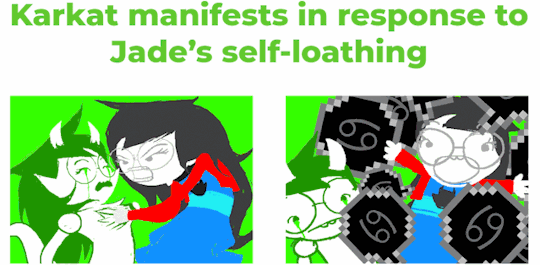
This would be a good point to mention that not only imps and ogres, but trolls also function as manifestations for the people they impose upon. Karkat is not only an interruption here, but also a continuation. He points out that Jade’s self-loathing, that she cannot safely distance herself from the qualities of Jadesprite she finds distasteful. This is precisely why Karkat ends the conversation by telling Jade to turn off the fourth wall (which divides the self!), as well as the reason he imagines Jade making out with herself: Karkat is on every front presenting the prospect of union with oneself.
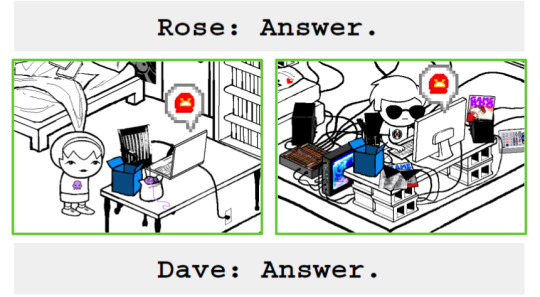
The notion of trolls as manifestations first emerges clearly when Rose and Dave receive their packages from John. As they finish reading John’s letter, each is suddenly contacted by a troll and greeted with the command “Answer.” Critically, by word alone it is ambiguous as to whether the command refers to answering the troll or the letter. And as it turns out, these answer occur simultaneously: Rose and Dave’s responses to the letters are embedded in the subsequent conversations.
Rose receives a letter poking fun at her pretensions, claiming that her attempts to hide her affections for people are futile. In response we get Kanaya, who imperiously proclaims her disdain for Rose, only to suddenly change tact and explicitly seek Rose’s friendship, an entreaty which the oft paranoid Rose accepts. Dave receives a letter imploring him to let go of his insecurities and express himself. In response we get Tavros, the very picture of insecurity, who is fixated on the idea of making Dave shit himself (as part of an ‘emotional constipation’ motif that follows Dave). And Dave complies, in a sense, by way of the quasi-ironic gay treatise that compels Tavros to block him. Each conversation addresses the issues laid out in John’s letter.
Examples can be found throughout the comic. Equius remarking that he talks to Gamzee every day (2220) establishes that Gamzee is regularly haunted by the thoughts of domination that Equius voices -- both in the literal and metaphorical sense. Erisolsprite referring to Dirk as a rock 2oliid piiece of a22 and then calling himself 2ociiopathiic for even thinking something so callous (5516) expresses a conflict already present in Jake’s own mind, echoing the frustration with his own dirty thoughts expressed by the argument with brainghost!Dirk. Feferi’s pronounced enthusiasm for the imminent apocalypse should cause you to question Kanaya’s seemingly neutral resignation towards the end of the world, since Feferi manifests for Kanaya (2328). And so on.
The person being trolled is always being confronted with thoughts or feelings or memories already present within themself. Alien contact always doubles as a brain ghost haunting.
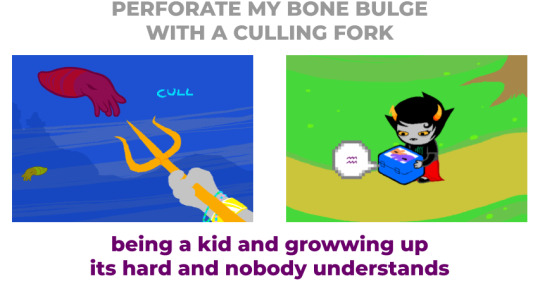
Another example, with some buildup: Karkat invokes the phrase “PERFORATE MY BONE BULGE WITH A CULLING FORK” to express his contempt for Vriska, and on subsequent pages we see Feferi pointing her culling fork at a cuttlefish (2181), as if to suggest that the creature symbolizes the bone bulge. Fast forward to Kanaya, who has just gotten through a conversation with Vriska and finds herself haunted by Eridan, who keeps going on about his romantic desperations and insisting (correctly) that Kanaya’s crush on Vriska is itself romantic. That his notification erupts from an image of cuttlefish held at Kanaya’s waist adds to the air of yearning, as though her own bulge is rumbling. The scene is capped off with a double entendre: “its hard and nobody understands” is playfully poignant jab at an inability to understand one’s own desires (among other things).
And Homestuck devotes a lot of attention to desire.

It’s long been acknowledged by the fandom at large that Kanaya’s attraction to Light players functions as a joke on the proverbial moth-to-the-flame. As reconciliation with the fire destroys the moth, there’s a morbid tinge to the attraction, as though it doubles as a death wish. And the wish is granted -- when Kanaya dies in Homestuck, she dies to light, either from Eridan’s wand or the laser blasts unleashed by HIC. Even the death of Kanaya’s lusus pertains to light -- the matriorb ripped from her innards is shaped like a miniature sun, as if to establish some loose link between the notion of motherhood and the incandescence Kanaya eventually achieves.
This can be generalized into a principle wherein lusii (and the circumstances of their deaths!) can functions as analogies for the desire of the wards.
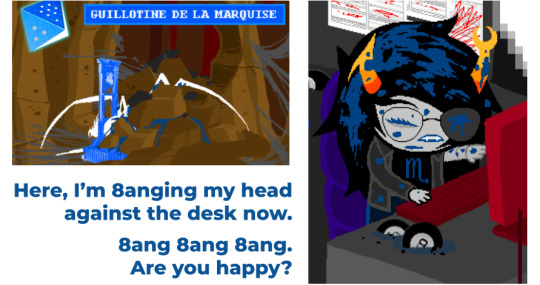
Vriska, for example, desires execution. When offering Terezi a flimsy apology for crippling Tavros and proxy-murdering Aradia, Vriska offers to slam her head against her desk in penitence. This moment should be read against Vriska’s addiction to breaking 8 balls, and leaving the broken shards lying around as though she’s inviting the “bad luck” of stepping on them. It /is/ an invitation. Vriska seeks love via violent retribution against herself. This is why in the right panel, Vriska’s blood-spattered head is juxtaposed with a broken 8 ball: the blood came from Spidermom’s execution (which characterizes Vriska’s desire), and motif of 8R8K H34DS connects the moment to Vriska’s idea of apology.
Like Kanaya, Vriska (to a degree) seems to structure her love life along these lines. In the words of @azdoine:
like ppl are actually out here writing Vriska as the top as if her entire Act 5 character arc isn’t about bratting out until Terezi has no choice but to punish her
“oh noo, I, the thief of light, stole all of your luck, and made the coin land on the scratched side! now you have to kill me! but I’m probably going to get away with everything, because you don’t have the guts to stab me with that sword of yours!!!!!!!! if only there was somebody, like you, who could prove me wrong!”
EXTREMELY SUBTLE THERE, VRISKA
Vriska’s approach to wooing Tavros also revolves around baiting execution:

The scene: Tavros leads a horde of imps and ogres into a mystery cave, the top of which is adorned with kissing lizards and an alchemical symbol. Tavros is putting a puzzle of a frog together, but Vriska has already pieced together the puzzle: making a frog universe is, in part, a cipher for personal reproduction. The Ultimate Alchemy is making a baby! And as Vriska says, “real gamers cut to the chase. They power through all the nonsense and go for the gold.” So she brings Tavros to LOMAT and makes the moves on him.
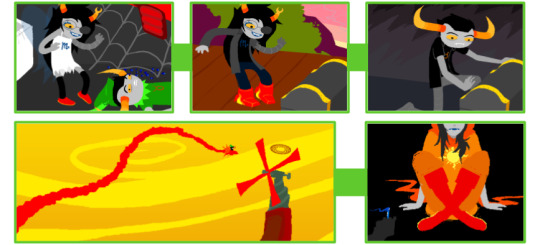
Tavros is equated to a treasure chest by the repeated use of framing and Vriska is GOING FOR THE GOLD, like a WINNER. Tavros later reaches into the same chest for his lance before heading off to attempt to kill Vriska -- affirming that the treasure Vriska seeks here is Tavros’s “lance”.
This setup was suggested by the conversation accompanying the kissing salamanders: Vriska gives Tavros a map with a big red X, saying he should take his legion of imps through the gate and go defeat his denizen. The gate actually leads to Vriska, but she isn’t lying. She is positioning herself to be Tavros’s final boss. The imps are manifestations of Tavros’s pent up rage (much of which was generated by Vriska’s harassment), and Vriska wants Tavros to take that anger out on her. Hence the later panel which uses Vriska’s boots to place a big red X directly over her groin, making explicit the implicit goal of Tavros’s trip to the windmill X-gate.
This pursuit of love through violent comeuppance may have something to do with Vriska’s bitter disappointment that ghost!Aradia did not seem to hate her.
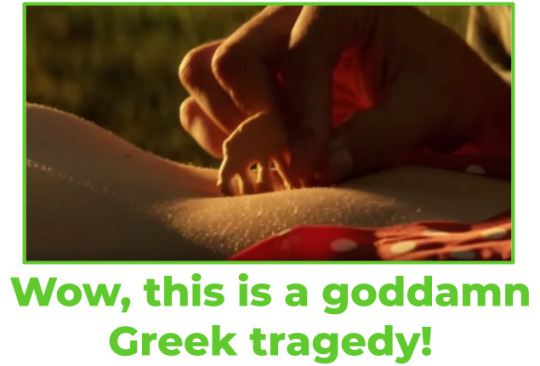
An intermission/introduction of sorts, as we bridge from one discussion of desire to another: did you know that Michael Bay’s Armageddon (1998) structures itself in part around Freud’s Oedipus complex? I say this in total sincerity.
The plot: a meteor the size of Texas bears down upon the Earth, threatening armageddon. Luckily, a crew of rough-and-tumble oil drillers are ready to fly into space and split that mother in two. Oh HELL yeah.
Except, wait, the movie’s actually about family drama: Bruce Willis finds Ben Affleck sleeping with his daughter Liv Tyler; Willis proceeds to chase Affleck around the oil rig with a shotgun, bang bang bang. Not Allowed. The Protective-Father-Hates-Your-Boyfriend dynamic is presented as an Oedipal triad of sorts: although Tyler is not literally Affleck’s mother, she performs the mom-function of “forbidden object of desire” -- and Willis opening fire is equivalent to the castration said to await trespassers onto maternal soil.
The above reading is buttressed by jokes: Armageddon appears to function within an implicit dream machine, such that the characters’ thoughts and fears can become manifest in their environment. So when it comes to pass that whenever Affleck climbs into a hole (heehee), a pipe breaks (hoohoo), and suddenly everything goes boom, I read that as Affleck reliving the consequences of boning Tyler, packaged in such a way that the Freudian fear of castration is more explicit. (The relevance of Oedipus to the proceedings adds some humor to Steve Buscemi declaring the entire disastrous situation a “Greek tragedy”)
At any rate, after some shenanigans, Willis comes to accept Affleck’s claim to his daughter and confers the deed, as it were. Willis gives the young couple his blessing and they get married. Hooray!
Except, wait, the movie’s actually about the perpetuation of the oil industry: the dream machine was declared at the beginning of the movie when a petty street-side argument triggered the first barrage of meteors. The meteor the size of Texas (aka Dotty) is triggered by conflicts that haunt the central cast -- namely Willis, who enters the film hitting golf balls at a Green Peace boat. On a metaphorical level, Dotty is a golf ball the size of Texas, striking directly at the Earth instead its self-declared representatives. There’s a certain irony here: the film lampshades that the men who are destroying the world have been tasked with saving it.
The family drama folds into the environmentalist angle: Liv Tyler is a symbol of the earth (which gets drilled). This is the joke when Affleck is bouncing animal crackers around on her belly like she’s host to the Savannah: she kind of is! It’s no coincidence that Willis confers ownership of the oil rig at the same moment that he offers his daughter’s hand in marriage: the motifs are being discussed simultaneously.
But enough of all of that: back to Homestuck.
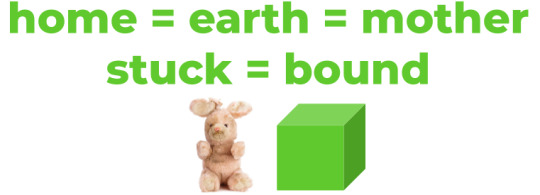
Armageddon’s simultaneous casting of Liv Tyler into the roles of earth and mother offers a glimpse at the interpretive possibilities made available by Hussie’s statement that Homestuck is in a way a synonym for Earthbound (an RPG in which “homesickness” is a status ailment which can be cured by calling your mom). Stuckness or boundness can be deployed to communicate a sense of longing for “home”.
A good chunk of Homestuck is built upon feelings of nostalgia, taken to mean a sort of intense separation anxiety with the past. John speaks about this when he watches Con Air with Jade – John wants the movie to feel like it did when he watched it with his Dad long ago, but the feeling from when he was a kid is gone. This upsets him. Moreover, John’s freakout starts at the moment Cyrus puts a gun to the bunny’s head (5286): Con Air itself is partly about Nic Cage trying to return to the life he lost when he went to jail, and ‘putting the bunny back in the box’ is a metaphor for the attempt. Cyrus, in threatening the bunny, is highlighting his role as a force preventing things from going back to how they were. Thus, if we are to believe that John is responding to the movie thematically, Cyrus confronts John with his own inability to go back to a happier past – his inability to go home -- and this recognition is met with anger.
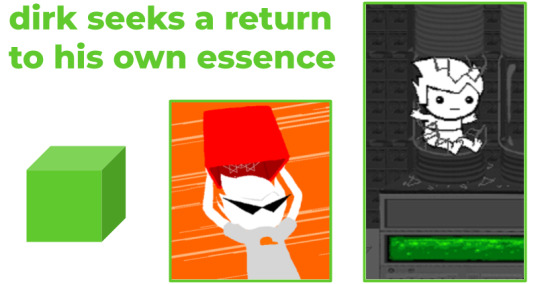
In making the leap to the psychoanalytic motifs, it helps to recall the part where baby!Dirk responds to being born by cracking open his ectotube and crawling back inside. Dirk, who aspires towards his “ultimate self”, illustrates here that he envisions his ascension as a return to the ‘essence’ of Dirk from which he (and all other iterations of himself) arose, as represented by the ectoslime. Baby!Dirk gestures at unity with his ectoslime/essence by crawling back into the place from which he was born, which I’m basically claiming is a “return to the womb” on a symbolic level, or at least that this is a useful parallel to draw. (A related motif to think about: Dirk decapitates himself by sticking his head inside a box, which as per Con Air symbolizes the place you wish to return to)
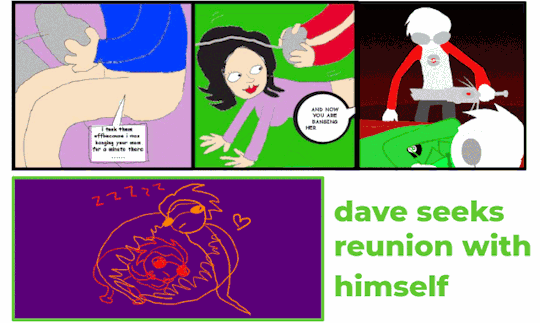
[Hella Jeff sez: “i took (my pants) off because i was banging your mom for a minute there..... AND NOW YOU ARE BANGING HER”]
Castration becomes unavoidable as you try to relate all of this to Dave, whose occasional references to banging hot moms are part of an ongoing reference to the Oedipus Complex. Critically, the complex is not /just/ about wanting to bone your mom, but also fear that your dad will chop your junk off if you do. The breaking of Dave’s sword on the rooftop is a realization of this fear (yes, we’re doing the “swords are phallic” thing). But Dave has no mom that he knows of, so what gives?
The answer is in the way Bro inexplicably breaks the record emblem on Dave’s t-shirt, as though he has introduced a fissure into Dave’s very identity. Life with Bro has made it very difficult for Dave to be honest with himself, which is to say, Dave pictures Bro’s abuse as having divided him from an ideal “true self”, which can feel emotions without all the anxious ironic detachment. I mentioned before that seeking unity with that from which you came is a “return to the womb”. This is the sense in which the Oedipal mom attraction becomes relevant: the return to the past is sexualized. The ‘home’ Dave wishes to return to is /himself/, and in this sense Dave is his own hot mom (which is related to how often Dave compliments his own looks, as well as the above gif suggesting Dave’s boner – he is literally/metaphorically “attracted” to himself).
(Incidentally: this model of desire, in which a broken subject attempt to become whole again by seeking out its lost half, is basically the concept of the soulmate, as laid out by Plato. Cherub reproduction turns the metaphysical pursuit of one’s lost half into a plot-level objective)
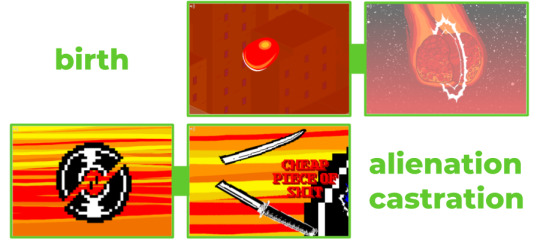
John’s entry item (apple) was linked to fear embodied in a childhood trauma (the Fall), and the same can be said of Dave. Hatching from the shell that contained your primordial goop (Dirk) is analogous to being violently separated from yourself (Dave), which is why Dave’s entry item (an egg) hatching coincided with Bro slicing the meteor in half: the abuse that divided Dave from himself, his “castration” by Bro, is simultaneously the “birth” that separated Dave from his “mother” (which is also Dave).
The general idea is that birth = self-alienation = castration, insofar as all are depicted as modes of being separated from oneself.

The broad motif of ‘being separated from oneself’ can be very useful for identifying brain ghosts in unexpected places. Take for example, Roxy’s fenestrated planes: when they are introduced the narrative is quick to tell us that if someone were caught half in/out of one of the windows when the power cuts out, they would be sliced in half. By the rule of Chekhov’s gun, this introduction should mean we should eventually see someone get gorily bisected by the window, but alas we never do.
Instead, when Gcat warped the panel away, trapping Roxy between the windows, we were shown the image of a bisected horse puppet in Dirk’s apartment, This signals that Chekhov’s gun has indeed gone off. But rather than splitting a body, it split a soul: Meenah’s introduction follows the sequence because Roxy has generated a shadow of herself, a doppelganger. This is not without precedent: an earlier portion of this post was devoted to exploring the fourth wall as a mode of self-alienation. Roxy’s panel mishap can be considered part of that pattern.
If Meenah functions as an extension of Roxy, all of her actions can be read as bearing some relations to Roxy’s own latent thoughts and desires. Prior to the epilogues, for example, Meenah imploring John not to give her the ring seemed to be yet another Fuck You to the late Chekov: the issue never comes up again. But a psychic link between Meenah and Roxy would suggest that John broke his promise to Meenah by giving the ring to Roxy, and that whatever motivations compelled Meenah to make her request in the first place would also apply to Roxy.
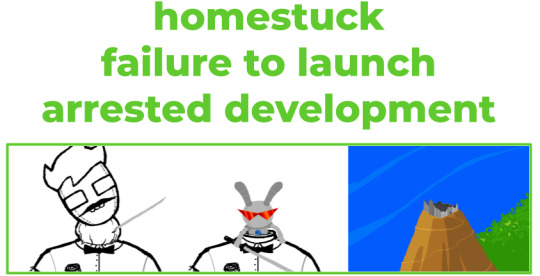
Decapitation is yet another mode of self-alienation, and thus can be construed as a mode of birth. Hence the image of Lil Sebastian hatching from his shell of taxidermied man meat. That’s a motif unto itself, but what I wish to call attention to is the match-cut from John’s broke body to Jake’s broken tower. The juxtaposition collapses the images into metaphor, such that Jake’s loose dome in the woods becomes a decapitated head -- an appropriate addition to the pumpkin patch it rests in, given all the Headless Horseman jokes. We can look to Dirk for for another example of a headless horse-man of the house echoing the head: for a guy who idealizes decapitation to such a degree, it is striking that Sburb aims to provoke him by reattaching his beheaded apartment to its underlying units.
Houses act as metaphors for heads, then “Homestuck” could also interpreted as “head trapped” -- like the title emphasizes confinement within one’s own mind. Such a reading offers up Failure to Launch and Arrested Development (posters on John and Jane’s walls) as alternate synonyms for Homestuck, as each satirizes (or outright mocks) potential failure states in the process of inter-personal and mental development (ie “growing up”). Like Earthbound, both lean on a sense of homesickness in characterizing despondency, as though characters are haunted by the needs that defined their childhood -- or else find themselves needing that childhood itself.
But collapsing nostalgia into infantile regression is far from the only way to approach the house/heads equation. One might read the transformation and growth of houses with Sburb as metaphors for expanding the mind. One might infer that the choreography of events within houses can map out thoughts like dancing bees. One might take the metaphor as a foothold for interpreting the significance of the Sburb logo being at once a house and a window. \I have my own thoughts about Homestuck’s brain-ghost haunted house-minds, but for now, I only hope that this document has raised some interesting questions -- and ideally, that the interpretive approaches I’ve described might be useful in seeking answers.
#homestuck#homestuck meta#this is basically the contents of the stream#movies#john#rose#dave#jade#jake#dirk#roxy#gamzee#vriska#4th wall#psychoanalysis#house as head#plato
307 notes
·
View notes